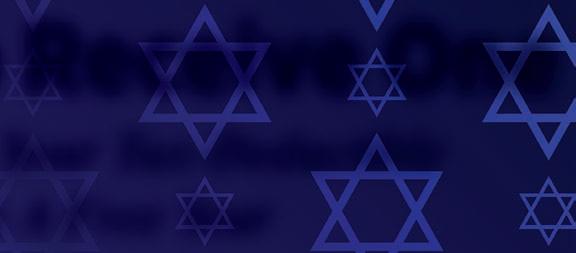CYBERSTALKER ARRESTED
After year of harassment, man stands trial



SENIOR
LIFESTYLE Shemer Art Center’s exhibit celebrates local artist

After year of harassment, man stands trial



LIFESTYLE Shemer Art Center’s exhibit celebrates local artist
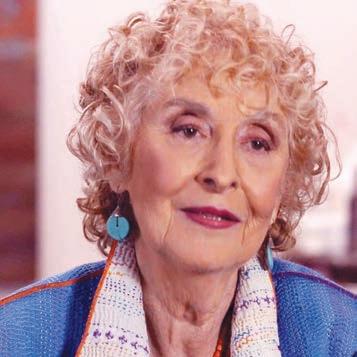
Harvey Dietrich, a pioneering cattle rancher and a driving force for the Jewish community in Arizona, died Dec. 25. He was 85.
Dietrich’s longtime friend, Jerry Lewkowitz, described him as “a cowboy rancher and a gentleman.”
“He was a very special guy in so many respects,” Lewkowitz said. “He was a good friend in that if you want to talk to him, you could, and if he agreed or disagreed, he was the same person.”
Dietrich began working at a meat-packing plant at age 15, after his family moved from Boston to Los Angeles. At 19, he was promoted to cattle buyer and in 1959, he moved to Phoenix, where he rose through the ranks of the cattle industry.
A tenacious entrepreneur, Dietrich helped launch Sun Land Beef Co., which revolutionized the beef industry and became one of the largest beef production companies in the West. After he sold his stake in Sun Land Beef in 1997, Dietrich devoted himself full-time to ranching, which he began as a side business in 1972. Today, his 770,000-acre Diamond A Ranch in Seligman is the largest in Arizona.
“He was basically a self-made man,” said Larry Bell, executive director of the Arizona Jewish Historical Society. “He worked as hard as anybody I’ve ever seen, and you could never go five or 10 minutes without his cell phone ringing with something to do with the cattle and the price of feed and the fall roundup or whatever — he would
 SHANNON LEVITT | MANAGING EDITOR
SHANNON LEVITT | MANAGING EDITOR
As 2020 drew to a close, Pam Moreno, a therapist for Jewish Family & Children’s Service’s senior programs, found herself looking forward to a much brighter 2021.
After discovering she qualified for Phase 1A of the COVID-19 vaccination program, she drove to Chandler and what appeared to be a football field-sized space with several rows of cars. The Army National Guard and various fire departments were assisting as cars approached the injection stations. She was surprised by the orderly nature of the event. Twenty-five minutes after she pulled into line, she was vaccinated and on her way home. It was no more painful than a flu shot, she said.
“Everything was so organized,” she said. “I didn’t even get out of my car.”
Everyone involved — whether on the giving or receiving end — was excited and the atmosphere was joyous, Moreno said.
After nearly a year of dealing with COVID, as well as the current surge in infections and hospitalizations, she feels hopeful for the first time.
In Maricopa County alone, nursing homes and assisted-living facilities were hit hard. Since March, more
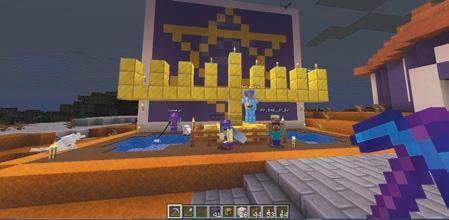
Congregation Beth Israel’s youth advisor, Erik Rendelman, uses Minecraft to engage students in unique and fun Jewish lessons. To read more, go to p. 5.
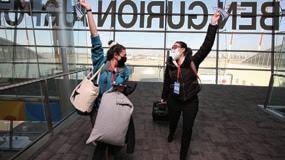
always have something business-wise going on.”
His legacy in the beef industry includes his fight to remove chemicals, artificial drugs and GMOs from being used in cattle feed and beef production, instead seeking to feed cows a more natural diet.
“We keep looking for a better way to make food safer, better, higher quality,” Dietrich said in a video produced by the AZJHS for the 2019 Heritage Award Gala. “That’s a great mission. You help a lot of people.”
Dietrich earned numerous awards for his work as a cattleman and a philanthropist. In 2014, the Arizona National Livestock Show honored him as the Arizona Pioneer Stockman; in 2015, the National Cowboy & Western Heritage Museum in Oklahoma City honored Dietrich with the Chester A. Reynolds Award for “unwavering commitment to Western principles.”
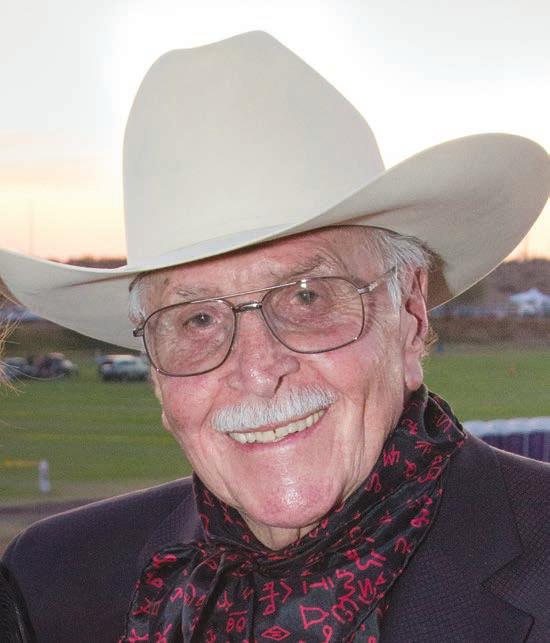
Harvey and Marnie Dietrich supported numerous community organizations over the years, including the Mayo Clinic Cancer Center, the T-Gen Cancer Research Institute, the Jewish National Fund, Hillsdale College, the Greater Phoenix Jewish Film Festival and the Phoenix Art Museum. Harvey also served on the board of directors of AZJHS and Kivel Campus of Care.
“They’re incredible people in the sense that they value their community and they give back to their community,” said Phyllis Epner, a friend of the Dietrichs.
AZJHS honored Harvey and his wife Marnie with the 2019 Jerry Lewkowitz Heritage Award.
“He was very important as a community philanthropist and supporter,” Bell said. Yet “he was a very quiet and humble guy who didn’t really desire or demand a lot of recognition for his philanthropy.”
Dietrich’s generosity extended to his friends and colleagues, as well. While he wasn’t able to attend many meetings of the AZJHS board of directors, he always brought lunch when he did.
“He was giving,” Lewkowitz said. “He was a generous guy.”
In the AZJHS 2019 Heritage Award Gala video presentation, Dietrich spoke about the importance of standing up to antiSemitism, of doing the right thing and of giving gifts that improve the lives of others.
“The most important thing, for me and the way I look at things, it’s what you leave in people’s hearts,” Dietrich said. “And the quality of life, if you have that opportunity to change people’s lives, is extremely important.”
Dietrich is survived by his wife, Marnie, and his two children, Lisa and Steve. Rabbi Stephen Kahn of Congregation Beth
Israel presided over the funeral service at Beth El Cemetery on Wednesday, Dec. 30.
“Harvey was indeed a man who was larger than life, a man with an insatiable passion for life itself, an unparalleled work ethic well into his 80s and a commitment, especially as he grew in wisdom and in years, to learning from his own life,” Kahn said in his eulogy.
“He possessed knowledge and wisdom, even if others didn’t always like hearing it,” Kahn added. “Harvey required a strong personality to do what he did, with persistence and a commitment to the convictions of his own aspirations.”
Ultimately, Dietrich’s legacy is inextricable from his love of ranching, and his pioneering role in the beef industry in the United States.
“He was the last of the line,” Bell said. “There were others before him, like Eli Grouskay and Aubrey Grouskay and others as well, that were in that business ... I don’t know that there’s any that are following him, though. So he may also be remembered as the last Jewish cowboy, although time will tell.” JN
January 8
January 22
February 5
February 19
March 5
March 12
March 19
March 26
April 2
April 16
May 7
May 21
June 4
July 9
August 6*
August 20
August 27
September 3
September 10
September 24
October 1
October 15**
November 5
November 19
December 3
December 17
PUBLISHER Jewish Community Foundation of Greater Phoenix


GENERAL MANAGER
Rich Solomon | 602.639.5861 rsolomon@jewishaz.com
EDITORIAL DIRECTOR Liz Spikol | 215.832.0747 lspikol@midatlanticmedia.com
MANAGING EDITOR Shannon Levitt | 602.639.5855 slevitt@jewishaz.com
STAFF WRITER Ellen O'Brien | 602.872.9470 eobrien@jewishaz.com


ADVERTISING SALES CONSULTANT

Jodi Lipson | 602.639.5866 jlipson@jewishaz.com
SUBSCRIPTIONS 602.870.9470 x 1 subscriptions@jewishaz.com
GRAPHIC DESIGNER
Frank Wagner | 410.902.2300 ads_phoenixjn@midatlanticmedia.com
Tuesday
days prior to publication
ADVERTISING: 11 a.m., Friday 3 days prior to publication
Jaime Roberts, Publisher | 2013-2016
Florence Newmark Eckstein, Publisher | 1981-2013
Cecil Newmark, Publisher | 1961-1981
Pearl Newmark, Editor | 1961-1981
M.B. Goldman, Jr., Founder | 1948-1961
PROUD MEMBER OF
than 9,400 residents and staff were infected and more than 1,400 people died.
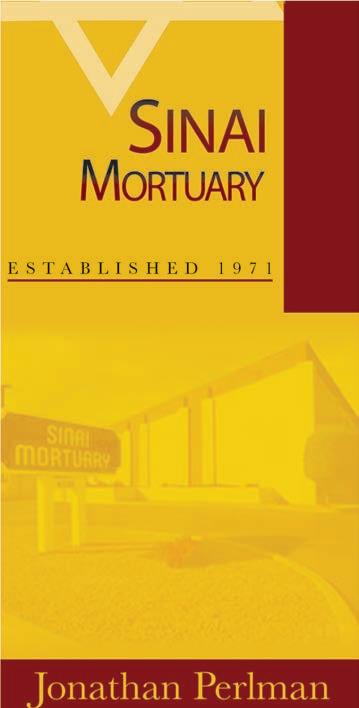
Due in large part to that record, Phase 1A includes front-line health care workers and long-term care facility staff and residents. Following on their heels in Phase 1B are those over the age of 75. This next phase will also include those working in child care and education as well as public safety employees and is set to start in mid- to late January, according to Arizona Department of Health Services (ADHS).
ADHS faced criticism in the last two weeks about a slower than optimal rollout and continued confusion about when to expect the vaccine and where to go to receive it. Despite these concerns, many people — though not all — are giving the department the benefit of the doubt.
Rabbi Mindie Snyder, rabbi and chaplain for Sun Health Communities, received her vaccine Dec. 30 in an “orderly and expedient” process. She was vaccinated in the first phase due to her work with a vulnerable senior population.
“I’m doing this for them and I’m doing this for the community at large,” she said about receiving the vaccine. “This is bigger than myself.”
Rabbinically, she added, vaccinations are important in that they protect life.

“This is a very big deal,” she said. “We understand whoever saves one life is considered as if they saved an entire world.”
In terms of the rollout, she is under no illusion that it will be quick or that even when the pace picks up the problem of COVID will go away. There is a “huge scientific and logistics effort,” she said, behind the “life-saving intervention.”
On the day she was vaccinated, she ministered to someone with COVID who was feeling its effects. Even though the person didn’t go to the hospital, they felt very isolated. “For people who think it’s not a big deal,” she said, “that’s the part that concerns me.”
Still, with the vaccine finally here, she asked, “How can you be other than hopeful?”
Others are less sanguine.
“There are still so many unanswered questions,” said Monica McCullough, Madrona Hospice & Palliative Care’s nursing director.
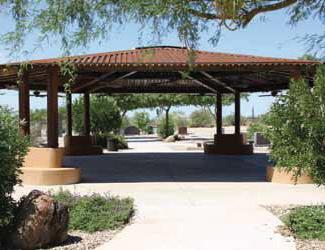
In early December, McCullough worried about how the vaccine would be rolled out, who would be prioritized and whether those decisions would be met with acceptance or anger. But by the end of December, she’d received the vaccine and is now anticipating vaccines
for her staff members, who are at risk when visiting community members. The good news, she said, is that the majority of them are anxious to get vaccinated.
The unknown, however, casts a shadow for her.
“We’re just kind of rolling the dice and praying that we’re going in the right direction,” she said. “This is virgin territory for everybody.”
Lana Susskind-Wilder, a Jewish neuropsychologist, was vaccinated the first week vaccines were available in Phoenix. She found the process efficient.
The majority of her clients are seniors who are still waiting to find out when they will be vaccinated. However, she’s witnessed no resentment that health care workers are first in line.
“They know what people are doing for them and recognize why it’s important and are supportive,” she said. “The response is more, ‘Thank god, you got yours — I’m excited to get mine.’”
at the Beatitudes Campus, received a surprise call at 1 p.m. on Dec. 28, telling her if she came to the office at 3:30 p.m., she’d receive the vaccine. Kraver only had one moment of trepidation: “I’d sure like to know the ingredients because I have a few allergies,” she said. “But when they called me I was all up for it.”
She arrived promptly and two hours later she was vaccinated with the Moderna vaccine. She will have a second injection Jan. 26.
Her husband has been in the nursing facility at Beatitudes for nine months due to dementia and various physical ailments. Kraver, along with six other Beatitudes residents with a partner in nursing care, are the only ones allowed to visit as designated caretakers. All seven were vaccinated.
“I got a little nervous, but I was excited,” Kraver said. “I feel fine — maybe my arm’s a little bit sore.”
Her 42nd wedding anniversary was Jan. 1, and the vaccine is finally offering a bright spot in what was a difficult year.
“With my husband in the nursing center for nine months and with dementia and all the conditions he is living with — I want to get back to going every day and holding his hand,” she said. “I’m very hopeful that things will get better.”
Bernie Aronson, 86, described himself as a “great believer in vaccinations of all kinds.”
Susskind-Wilder regularly sees patients face-to-face, easily spending more than an hour doing a neurological assessment. While she wears PPE during the exam, she finds herself wondering if, having had the virus a few months ago, she still has immunity. The idea of the vaccine brought her some relief. “I never had a moment of questioning if I would take it.”
“I’m hesitant to be too optimistic,” she added. “Until we get to herd immunity, we’ll continue to be at risk, and I hope we don’t get to a place where we take the attitude with people who don’t want to take it: You’re on your own. I have hope that over time other people will become more comfortable, and that’s how we’ll all get back to normal.”
“I’m just glad we’re getting it when we are,” said Crystal Tang, director of therapeutic respiration at Kivel Campus of Care. She expects to be vaccinated in the middle of January — timing that makes sense to her.
But Marlene Waterman, an 84-year-old resident in Kivel’s assisted-living facility, was hoping she’d already be celebrating her first injection of the vaccine. “It’s not coming soon enough,” she said.
Barbara Kraver who lives independently
“I have 30-plus years of borrowed time,” he said, referring to the fact that both of his parents died in their 50s. “When I’m allowed to have the vaccination, I’m going to get it.”
His only concern now is whether enough people will take the vaccine to reach herd immunity.
“That’s where you need political and religious leadership,” he said. “I was brought up that you help your neighbor.”
He also remembered as a child, if someone had the measles, a public health official would put a quarantine sign on the door. “People respected that,” he said. “We’ve moved away from civic responsibility and acceptance and now we think we have the freedom to say no. That’s anarchy.”
“I haven’t the slightest idea where I am on the list,” said Melvin Selbst, 93. “I’ll probably be last.”
Selbst, another resident at Beatitudes in the independent living section, has no doubt that when it’s his turn, “I’ll take it any time they want to give it to me. I have no concerns at all.”
“When you get older, you’re always looking for hope,” he added. JN
"WITH MY HUSBAND IN THE NURSING CENTER FOR NINE MONTHS AND WITH DEMENTIA AND ALL THE CONDITIONS HE IS LIVING WITH — I WANT TO GET BACK TO GOING EVERY DAY AND HOLDING HIS HAND."
Tiffany Shlain, author of “24/6: The Power of Unplugging” (Simon & Schuster, 2019), will kick off the Bureau of Jewish Education’s 2021 Passages lecture series on Jan. 10 at 7 p.m.
Originally scheduled to speak at the Martin Pear Jewish Community Center last March, Shlain was forced to postpone her event due to the worsening coronavirus pandemic. Her talk, as well as all presentations in this year’s series, will be virtual on Zoom.
Shlain plans to speak about her book, recently released in paperback, which emphasizes the importance of taking one day off every week from technology — what she terms “technology Shabbats.”

“It’s a wonderful social way to kick off this day,” Shlain said. “So much of the value is in the actual quiet of Shabbat and the time for reflection and true connection with the people in your lives right in front of you instead of the ones on the screen.”
Myra Shindler, BJE’s executive director, is excited about Shlain’s upcoming presentation.
Before the pandemic, Shindler would often see parents when they picked up their children from school — talking on their phone rather than to their children. “Wouldn’t it be nice to have a ‘tech Shabbat’ as Tiffany calls it, where we are present for the people around us?” Shindler asked.
Pre-pandemic, silencing one’s cell phone for an entire day might have been a heavy lift for a society besotted with social media and instant messaging. Now, with social distancing guidelines in effect, people are more dependent than ever on technology both socially and for work, and the idea seems simply unattainable.
And yet, Shlain, a technology junkie herself, said the interest in managing
time with screens in order to live well is increasing exponentially during the pandemic. People were “burned out” before COVID-19 and now that they do “absolutely everything on a screen,” taking one day off a week is even more essential for mental health and real connection, she said. And she insists it’s achievable.
Even Shlain’s 17-year-old daughter said her family’s technology Shabbats are the one consistent thing during the course of the pandemic. They serve as a comfort as well as a respite.
“They’re a break from the stress of the pandemic news and the election news and a break from everything going on,” said Shlain. “And they replenish and rejuvenate us.”
Shlain is not religious but rather a self-described cultural Jew. Her Judaism is no less important to her for that and is reflected in many aspects of her work in film and writing. “I love the culture, I love the history, I love the wrestling with ideas and humor and the food and the rituals,” she said.
For the blonde and blue-eyed filmmaker and author, “revealing” her Judaism is always a choice. While she doesn’t write or make films exclusively about her religion, she’s comfortable mixing it with her more secular interests, especially technology, which is how she came to write and speak about the importance of technology Shabbats.
Shlain and her family turn off their cell phones, laptops and other technology for an entire day, and they’ve been doing that almost every week for ten years. And she’s found it’s not nearly as difficult as one might think.
“It’s not a fast, a detox or a punishment,” Shlain insisted. Instead, it’s all in the way the idea is presented, and in her talk she
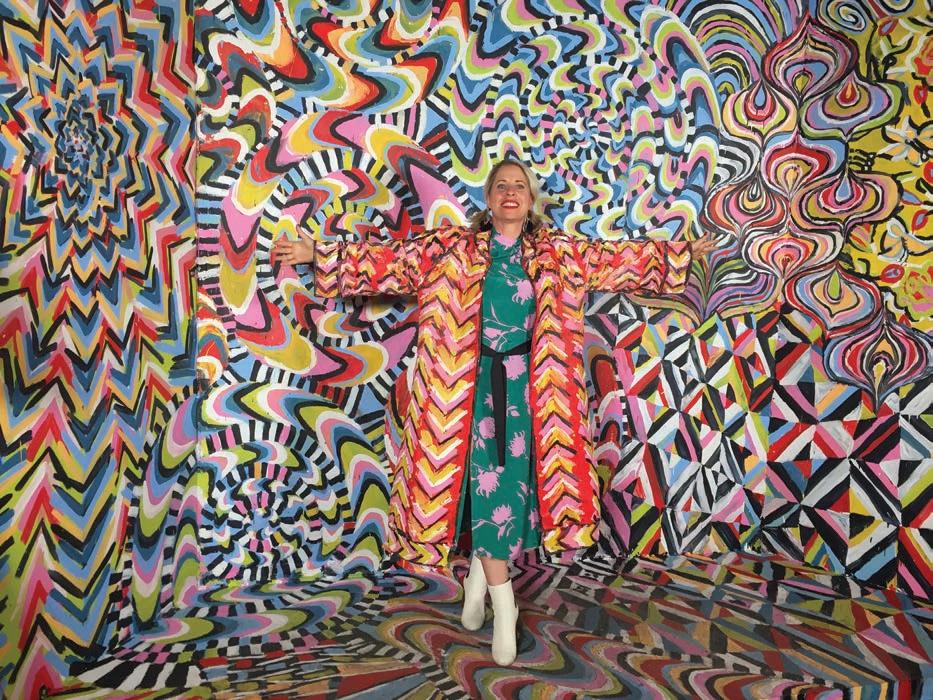

emails and being online most of the day — is that the façade can fall from the 24/7 mentality. She emphasized that people aren’t built for that stress all day every day no matter how much they’ve been convinced they should be. One day away from it all helps to refresh minds and spirits.
“I get my soul back and my mind back,” she said.
Shlain is grateful for the opportunity to speak to the BJE. She feels the urgency to share what she called, “this ancient practice that’s simple and free and rooted in deep ancient wisdom.”
She explained that technology Shabbats have been used in Jewish schools and camps, but Shabbat is not only for Jews. However, it’s especially available to Jews, including those who previously saw Shabbat as simply a fun dinner to have with family and friends once every month or so.
The pandemic increased interest in her book and talks, and she will share how it also gave her the impetus to think about the virtual world differently and more expansively. Corporations and organizations started consulting with her about developing digital wellness programs during the pandemic. She is attempting to transfer her ideas on this topic into the new realm of
Zoom and virtual meetings.
“I’ve probably done more talks in the last nine months than I even did before, but they’re all virtual so I can actually do more of them, and the demand is so much higher,” she said.
She also works remotely and gave up her film studio space in San Francisco. She enjoys the flexibility it allows her, but she misses the human interaction too.
“There’s nothing that replaces being in a room with other people and experiencing something together, but I have been doing a lot of experimenting with how to bring that online.”
Shlain will expand on all of these topics and take questions and answers also.


BJE’s series features five more speakers over the course of the next three months: Eugene Kontorovich, Rahel Musleah, Naftali Aklum, Robyn Helzner and Malka Simkovich. The final event is March 7.
Shindler isn’t worried that the series being exclusively virtual will take away from it. “Shlain, as well as all our speakers, are so animated and passionate about their topics, the Passages series will translate well virtually,” she said. JN
Tickets are available at bjephoenix.org.

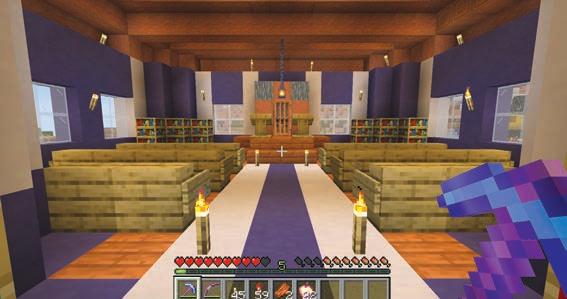 SHANNON LEVITT | MANAGING EDITOR
SHANNON LEVITT | MANAGING EDITOR
Erik Rendelman, youth advisor at Congregation Beth Israel, tried many things to entice kids back into community and engage them in Jewish learning once the coronavirus pandemic shut down the synagogue’s regular, in-person activities. And he was aided initially by the simple relief kids felt just getting on Zoom together while they were stuck at home.
“We tried to do hybrid, all ages programming, niche programming and we really ran the gamut on how to innovate programming in the middle of a pandemic,” he said.
But as the months wore on, he sensed their Zoom fatigue and knew it was time to shake things up.
Something of a gamer himself, Rendelman realized Minecraft — a game he enjoys with his friends and knows well — might be just the thing he and his colleagues needed to re-engage young people.

“This was where the magic started for me,” he said. “I can come up with Jewish content to weave into their Minecraft world — I get to put on my Jewish educator hat.”
The game has a number of useful features:
multiple players, online logins and the capability for kids to develop pro-gaming ideas they see on YouTube. There’s also a Minecraft realm — a 10-person club where people can log into CBI’s unique Minecraft world that’s always online.
Rendelman hosts Minecraft Mondays for his youth group every week. They save all their work “in their little Minecraft world, and their friends can log on at a different time and come to it and we can all sort of do things together,” he said.
Getting their Minecraft world up and running only took a weekend. “We built a tiny little synagogue and tried to approximate all of the different things that you need: a little Torah, an ark and an actual space that if enough people logged online we could have a minyan or we could hold a Shabbat.”
“With Minecraft, you can really make whatever you want and do whatever you want,” said Eli Shapiro, one of Rendelman’s regular participants. “That’s the whole purpose of the game — you can make a synagogue, and you can make a menorah.” During Chanukah members lit candles every night on the Minecraft menorah.
With a nod to the fantasy part of the world
they created, Reyna Sypes — another regular — added nine permanent cats to the menorah. She’s already thinking about ways to make creative Purim costumes in CBI’s realm.
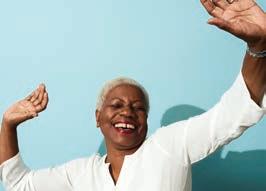
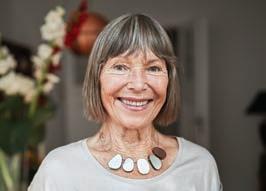
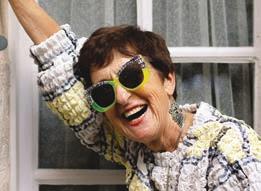
At present there are 15 regular participants, but Minecraft Mondays only began a few weeks ago so expectations for growth are high.
Before Chanukah, several kids told Rendelman they were hoping to get the game as a gift. “So it’s growing, and it’s growing fast,” Rendelman said.
The community aspect is what Ethan Leventhal likes about playing. “We have a big town in here, and it’s very helpful for new players starting out to get resources and stuff,” he said. “I’ve learned how important it is to have that good community so that other people can join and have fun.”
Rendelman is recommending Minecraft for all Jewish youth groups, and cost is one of its attractions. For basically the same cost as many in-person events, a youth director can choose to charge participants, make it part of their membership or keep it free.
Another benefit is that a director can host an unlimited number of students. However, only




about 10 or 20 can play at one time.
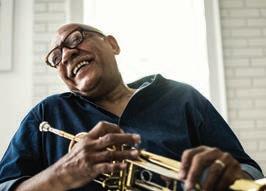
“Youth groups haven’t thought of this before, and I wonder how much the pandemic and everything that’s happened in 2020 has led to things people would have otherwise waited to do,” he said.
Rendelman hopes eventually to create a virtual version of an entire Jewish life cycle which would even include a virtual service with a rabbi. The possibilities are endless and exciting, but his ultimate goal is always getting kids enthusiastic and drawing them into the community. And he suspects it will outlast the pandemic.

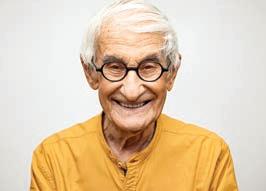
“It’s a very simple premise, but it’s turned out to be a very interesting opportunity,” he said. “It’s going to go well beyond COVID.”
“It’s really a fun thing to do during this stupid COVID time,” Shapiro said summing up the benefit of Minecraft Mondays without mincing words. “I can’t go to school and hang out with people on Minecraft, so I do that here.” JN
Connection is key to a longer & more vibrant life, and powers everything WE do here at Maravilla Scottsdale senior living community. It’s like being part of a super supportive family of waiters, chefs, housekeepers, ZEST® activity coaches, care & wellness teams, and even a bunch of really friendly and fun neighbors, all helping you thrive. This is what “we’re in this together” is all about at Maravilla.
Ask about our Exceptional SAVINGS SPECIAL! Call 480.269.1952 to schedule your personalized tour.
 ELLEN O’BRIEN | STAFF WRITER
ELLEN O’BRIEN | STAFF WRITER


On a Saturday morning in December 2019, a strange scene was captured on video outside Beth El Congregation in Phoenix: A man in a Guy Fawkes mask stood on a sidewalk holding a camera and shouted, “Allahu Akbar!” The 43-minute video, uploaded to YouTube on Dec. 14, 2019, garnered more than 5,000 views since that day and prompted an awareness campaign for the Greater Phoenix Jewish community about how to respond to harassment.

Josh Offenhartz, a lawyer and member of Beth El, wasn’t at the shul the day of the video. But when he heard about it, he did a “deep dive” into Chauncey Hollingberry’s channel to find out if he posed a serious threat to the community. As he watched Hollingberry’s videos, however, it became clear to him that what the community was dealing with was a provocateur who would eventually push things too far.
And indeed, just a month after Hollingberry appeared outside Or Tzion, he was arrested for cyberstalking.
“You could see it coming from his videos: He’s antagonistic, he pushes the boundary of what is legal and appropriate as far as invading somebody’s space legally, recording them, etc.,” Offenhartz said. “If you look through some of his stuff, it was only a matter of time before something like this happened.”
Within months of his visit to Beth El, and a subsequent video filmed outside Congregation Or Tzion in February, Hollingberry, the man behind the videos, would find himself arrested following a pattern of harassment and stalking that extended to government employees, reporters, teachers and family members.
Hollingberry refers to himself as a “First Amendment auditor.” Such “auditors” represent a “growing movement” of “individuals who specifically film on public property and police stations to test the rights to film in a public space,” according to First Amendment Watch at New York University.
Rabbi Levi Levertov, chair of the Jewish Advisory Board and chaplain for the Phoenix Police Department, worked with the police after the incident at Beth El to raise awareness about Hollingberry and his tactics. After a few months, he stopped following up on Hollingberry’s activities, but he wasn’t surprised to learn about his arrest.
“I followed him and many people followed him for a month or two, listening to his threats or not,” Levertov said.

The harassment campaign that ended in
Hollingberry’s arrest targeted an anonymous employee of the Arizona Attorney General’s Office, referred to as Victim K in court documents. It began following an “audit” of the AGO in July 2018, when Hollingberry was cited for trespassing, and the footage he uploaded to YouTube was taken down due to a privacy complaint from Victim K and another AGO employee.
From November 2018 until January 2020, Hollingberry repeatedly called, left messages, visited the AGO to complain about its no filming policy and encouraged his viewers to harass Victim K by email bombing her workplace and mailing her marijuana, tampons and sex toys.
His actions escalated at the beginning of 2020. On Jan. 20, he posted a video in which he displayed level-five body armor, adding, “There’s a reason why I’m saying that, but I won’t go into it now, and then also let’s see, I think tomorrow I’m going to go to the gun range.” He also posted a poll to his YouTube channel in February asking viewers if he should “audit a synagogue on the public sidewalk with body armour [sic], an AR-15 assault rifle and a camera.”
Hollingberry was charged with stalking in a criminal complaint filed on March 13 by the FBI, which concluded that Hollingberry used electronic means to “engage in a course of conduct targeting Victim K with the intent to harass, intimidate or place her under surveillance, and in doing so, has placed her in reasonable fear of death or of serious bodily injury causing substantial emotional distress.” He was arrested the same day.
Magistrate Judge Deborah Fine upheld a detention order for Hollingberry during a preliminary hearing and detention hearing on March 20, ruling that he should remain detained until trial due to the threat he posed to his victims and the risk that he might flee. Hollingberry’s trial was initially scheduled for Dec. 1, 2020, but delayed until Tuesday, Feb. 2, 2021.
Now that he’s incarcerated, “I hope that Mr. Hollingberry gets the support and the treatment that I think he visibly needs,” Offenhartz said.
Overall, the experience of Hollingberry’s “audits” left the Jewish community better prepared to handle similar situations in the future, Levertov said.
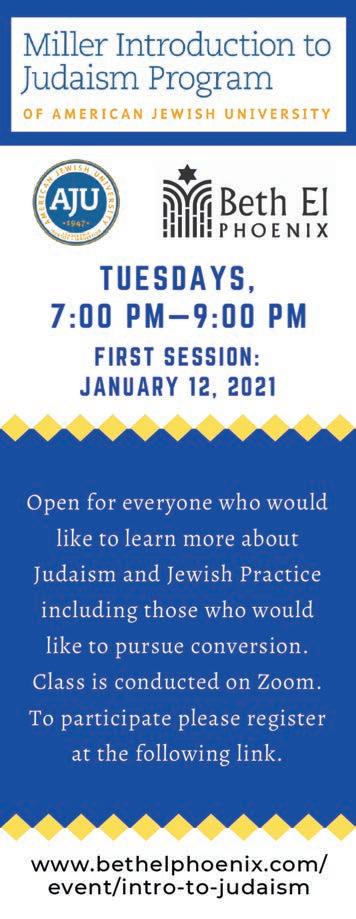
“It was educational for us,” he said. “I think we learned a lot from it, let’s put it that way.”

Levertov praised the Phoenix Police
Department for their swift reaction to the incident at Beth El, and for their role in informing synagogues and other community partners how best to react — which, he said, is not to react at all.
“This is just the beauty of what the Jewish Advisory Board in the police department really is meant to do,” Levertov said. “It’s a two-way street and it really played to its strengths.”
Jeremy Marwil, a member of Congregation Or Tzion, encountered Hollingberry in February when he arrived for services one morning. He approached him and filmed for 20 or 30 seconds, he said, just to tell him that he wouldn’t be intimidated.
“I’m not going to win an argument,” Marwil said, “but you can at least go up to him and say, ‘Hey, I know what you are, I know what you’re doing, we don’t appreciate it,’ and at least you know what you’re dealing with.”
Both Offenhartz and Marwil posted about Hollingberry and the incidents at Beth El and Or Tzion on social media in an attempt to educate and warn other members of the community.
“I thought it was important to get the word out, I thought it was important to stand up and say, ‘This guy’s out there. He’s not scaring me. You should be aware of him.’” Offenhartz said. “And I think that at least in a small social media circle we were able to spread that word.”
In spite of the bizarre nature of the incidents and the temporary scare, neither thought that Hollingberry was ultimately dangerous, or that his intent at the synagogues went beyond getting a reaction for his videos.
“Let’s just say he was still around,” Marwil said. “Everybody would say, ‘OK, there’s the crazy guy doing his crazy stuff again.’ I think the community would have learned that.”
Levertov also noted that while Hollingberry’s actions were certainly provocative and motivated by some form of anti-Semitism, it’s unlikely that any similar harassment will come from the First Amendment auditing community.
“When you start searching or going around on YouTube and looking at different videos, you realize this is not a typical First Amendment audit,” Levertov said. “It’s not usually a private institution. It’s usually government buildings, police departments, which is, I guess, some sort of comfort. [A synagogue] is not a typical target.” JN
On the campuses of Arizona State University and Northern Arizona University, Jewish students generally counted on social gather ings to grow and affirm their Jewish identity. Midweek dinners, Shabbat with friends, Israel programs, social justice initiatives and listen ing to motivational speeches by local rabbis and other leaders were all common ways to reach out to one another on large campuses where Jewish students otherwise could feel anonymous.
Then came the shock of the COVID-19 pandemic, abruptly sending students home without time for goodbyes. Summer’s anxiety worsened when state and local guidelines for the fall semester seemed fluid, and students were uncertain about what they would face when — and if — they returned to campus.
When students did return to ASU and NAU, there were drastic changes: no sporting events, ubiquitous masks, social distancing and remote classes — even while on campus.
Still, for Jewish leaders and rabbis, Jewish life on campus is an essential part of the college experience. They looked for ways to reinforce personal connections with students and to keep the Jewish student community together despite social distancing restrictions.
“There’s a saying — Kol Yisrael arevim zeh bazeh — which means all Jews are responsible for one another,” said Rabbi Shmuel Tiechtel, director of Rohr Chabad House at ASU. “This semester we had to reinvent our programs and figure out how to be responsible for the wellbeing of our students.”
Last summer, Tiechtel said, the prospect of basing an entire Chabad experience in the virtual world sounded unachievable since students claimed it was hard to feel connected on Zoom. Some kind of workaround was needed — something that would allow groups of Jewish students to see each other safely in person and have a Chabad experience that wasn’t on a screen.
Tiechtel put together a group of student leaders — Chabad Cares Ambassadors. With guidance from ASU’s director of student services, Tiechtel said he was able to spend the last eight months working out a way to create meaningful Chabad experiences while working to keep everyone safe.
What emerged from their brainstorming sessions were socially-distanced outdoor events with misting machines to keep everyone cool in warmer months, and newly donated heaters to warm students up since the weather turned colder.
The events allowed students “to come to a loving, caring, close-knit community where no one felt alone,” Tiechtel said. “They could connect, grow and learn about being Jewish.”
Zoe Tselos, a senior and president of Chabad at ASU, was glad she was able to enjoy Jewish events during her senior year, she said, despite the abnormalities of the semester.

The members of Hillel at NAU were not able to meet in the same way. The college’s guidelines said that no clubs could meet in person — in any capacity.
Still, Rachel Krell, Hillel at NAU’s president, would not let these obstacles deter her from her goal of connecting students and ensuring her peers felt cared for.
Krell landed on the solution of interactive Zoom meetings held every other week. What ensued was a group of Jewish students in Flagstaff getting training from the AntiDefamation League, writing letters to Israeli soldiers and virtual game nights, among other things.
“I joined Hillel and wanted to become the president because of the connections,” Krell said. “We’ve become very close to the members that we have. As a community, we’re very tight-knit and will continue to build these relationships next semester.”
Risa Brumer attributed Jewish Arizonans on Campus successes this semester at ASU to flexibility and setting reasonable goals.
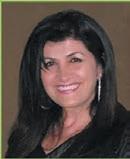
As the guidelines shifted over the course of the fall, it was Brumer, JAC’s co-director, and her team who figured out what wasn’t working, then invested more deeply in what was. They increased online programming and required RSVPs and symptom screening for Shabbat and other in-person events to monitor the amount of students who showed up.
“I really thrive on face-to-face interactions with students,” Brumer said. “It’s the best part of my job, but it was also really special to FaceTime and Zoom with students who couldn’t come in person.”
Although cases are now rising leading to more uncertainty for next semester, Brumer said the craziness of the fall resulted in some good.
“We were able to reevaluate our priorities and our mission,” Brumer said. “The people I’ve met are so much more open to establishing real and authentic relationships.” JN













INCLUDING:
Elizabeth Taylor’s
Blake Flayton started campaigning for Democrats when he was still a student at Chaparral High School in Scottsdale. In 2016, he knocked on doors for Hillary Clinton, and in 2018, he worked for local Democratic candidates Aaron Lieberman and Kelly Butler. He represented his school at the High School Democrats of America Summit in Washington, D.C., where he fell in love with the city and decided George Washington University would be a perfect fit for a political future.
Growing up in Scottsdale, he followed “the usual routine” for a Jewish kid in Greater Phoenix — attending Temple Chai’s preschool and Hebrew school followed by classes at Hebrew High. His Jewish identity is essential to him, and that, coupled with his passion for Democratic politics, helped him understand his place in the world.
But at GW he became painfully aware that his insistence on wearing his Jewishness openly occasionally clashed with the preconceptions of some of the more extremist elements of his progressive coalition. The tendency to flirt with anti-Zionist ideas and anti-Semitic tropes wasn’t the exclusive domain of Republicans as he once thought.
Eventually the dissonance led to frustration and became the impetus for a burgeoning writing career.
After emailing his thoughts on the antiSemitism he experienced to then-New York Times columnist Bari Weiss one night on a whim, she encouraged him to write his first column for the paper in late 2019.
Now 20, he’s also written for Jewish publications such as Jewish Journal in Los Angeles, The Forward and Tablet Magazine. In December he was part of a Zoom webinar panel hosted by Hillel at Home initiative about anti-Semitism on college campuses. It was moderated by Weiss.
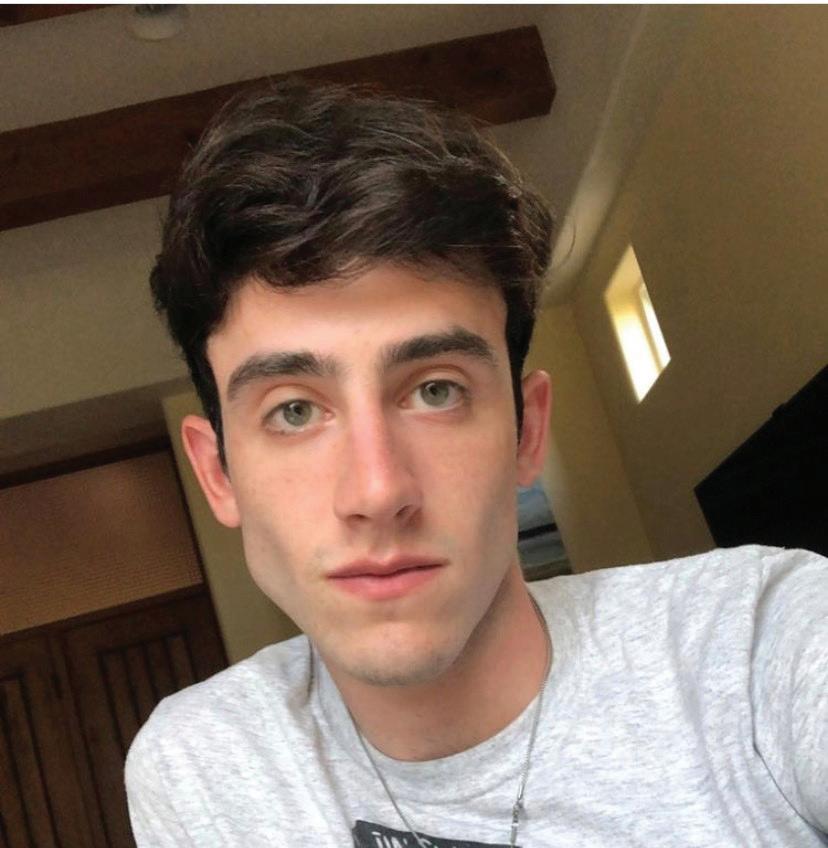
While the coronavirus pandemic ensures that his college classes will continue to be virtual next semester, Flayton is taking the opportunity to move to Brooklyn, New York, where he hopes to learn about minority communities living side by side, write and keep his hand in progressive politics where he hopes his voice will make a difference.
How much of your time do you spend on politics?
My freshman and sophomore year of college were so politically active — every single weekend was spent at a protest, at a rally, at an event. I did a lot of work for the [Elizabeth] Warren campaign. I was very active in protesting the confirmation of Brett Kavanaugh. A lot of different political opportunities presented themselves freshman year, and I got really involved in progressive liberal circles and was very active on social media advocating for progressive policies.
In 2020, I was hired as a senior organizing fellow for the Jewish Democratic Council of America. From June to November, I was working upwards of three to four hours a day
making calls for Mark Kelly in Arizona and Joe Biden. I was very committed to seeing Democrats win, and I still am very committed to Democratic politics.
What happened to give you pause about campus political work?
The breaking point was an incident on campus where a girl in a dorm room was caught on Snapchat while intoxicated, saying, “Yo, we’re going to bomb Israel, you Jewish pieces of s**t.”
It caused this uproar on campus — this explosion of debate. At first, condemnation of the incident from all organizations across the political spectrum was very nice to hear. But then this debate started about anti-Zionism and anti-Semitism — how does Israel factor into all of this, who should be allowed to hate Israel without saying we hate Jews — it created this horrible campus environment.
I knew I had to write about this, and I wrote about all of the things that I experienced not only during that week, but also throughout my entire time at GW.
I have been accused of terrible things by fellow progressives, because I refuse to say that Israel is the source of all evil in the world. I felt excluded and isolated from specific progressive organizations and groups, because I was proIsrael and didn’t really want to apologize for being pro-Israel. I wore my Jewishness openly in these conversations.
You take issue with some of the extreme elements of progressive groups?
I am an advocate for things like criminal justice reform and police reform and standing up for Black Americans in regards to everything that Black Lives Matter advocates for on paper. However, the attitude that some prominent BLM activists were expressing — specifically about the falsehood that Israel has something to do with training American police officers to be racist towards Black people — really rubbed me the wrong way.
There are a lot of problems in this way of thinking about race that puts everybody at a certain power position in society. That sort of thinking often puts Jewish people at a place of immense privilege and immense whiteness, and that’s super problematic because then we feel a little bit excluded from the fight for social justice, and that creates an environment where people can say anything they want about Israel, Jews and Jewish organizations — no matter how offensive or over-the-line or offputting it is.
It is framed as punching up or as speaking truth to power. And that is how anti-Semitism infects these progressive movements. If the Jews are framed as powerful, then speaking ill of them and demonizing them is seen as speaking truth to power.
Extreme views aside, are you still invested in progressive politics?
The vast majority of [non-Jewish] Black
Americans and Americans of color and all people in the struggle against oppression, whether it be racism or any type of discrimina tion or bigotry, are not part of this very radical movement. There’s a much stronger force and a much stronger front, that is looking toward a future that is centered around dialogue realistic policy and practical progressivism — abolish ing private prisons, chokeholds and qualified immunity; legalizing marijuana nationwide and decriminalizing drugs; and funding inner city public schools better.
Those are the types of policy initiatives that are really effective at reaching across the aisle and bettering society. These are things that we all agree on, because as liberal-minded, progressive-minded people, we all want to come together around policies that will make society better.
What we don’t agree on, and unfortunately what is now becoming the face of racial justice, is this view that says there needs to be a violent disruption of the “system,” and taking down of all the people who are perceived to be in power.
That kind of radical populism, more often than not, places Jewish people into the powerful and protected category, which is why anti-Semitism seems to flourish.
I like Bernie Sanders and think Bernie Sanders is an inspiring person, but as soon as the primary was between Joe Biden and Bernie Sanders, I did not hesitate to work for Joe Biden. Bernie’s supporters, especially his younger supporters on college campuses, ascribe to this really problematic ideology that says that certain people can’t be involved in social justice movements, and it places a lot of rules and red tape on how we’re supposed to work to make our country better.
What made you decide to go public about this?
What sealed the deal was the DC Dyke March. They made the decision to ban all displays of the Star of David if it looked at all like the Star of David on the Israeli flag. That is a very popular flag of choice among queer dudes, myself included, to wear a rainbow flag with the Star of David in the middle. It was not allowed because it was nationalistic iconography and it made Palestinians feel unsafe.
No other nationalist iconography or symbol was specifically condemned nor disallowed. The rage, the embarrassment and the confusion and mortification that I felt was ridiculous. It incited something in me, because these types of sentiments in queer progressive spaces are just getting a lot worse.
How did you come to be published on the New York Times opinion page?
I finished “How to Fight Anti-Semitism” by Bari Weiss during all of this craziness at GW with the Snapchat video and the whole rigmarole. My op-ed started off as an email to her explaining everything I had experienced and saying thank you for writing this book that really spoke to me.
I did not think that she was going to email back at all. I sent her this stream-of-consciousness email that was not edited and was all over the place. I woke up the next morning and she emailed to say, “This is amazing that you’re brave enough to put these stories out there, and would you consider turning this into an op-ed in the New York Times?”
Have your politics changed in light of what you’ve witnessed among fellow progressives? It’s really my purpose to remain active in the progressive movement in the Democratic Party. But in order to do that, we have to make sure that it doesn’t turn into the British Labour Party, and cause 40% of the Jews in America to want to emigrate, which is what happened with Jeremy Corbyn when he ran for prime minister in 2017.
Can you imagine a time when you don’t feel at home anymore in the Democratic Party? Being politically homeless is something really common in Jewish history. Actually, it’s the rule and not the exception for us to be politically homeless, because so often as our political parties polarize there is no room for us. I unfortunately see a reality in which that happens, but right now I’m devoting all of my energy and time to trying to prevent it.
Now you’re moving to New York. What do you hope to find there?
I‘m moving to Crown Heights, because it has a really rich Jewish history. And there’s also a lot of really interesting inter-community dynamics that have happened and are happening in Brooklyn right now, specifically in the Crown Heights area. I figured that there would be a lot to lot to learn and a lot to write about.
Anti-Semitism is not confined to one community and it’s not confined to just one side of the political spectrum. Racism is not confined to one community or one side of the political spectrum.
There are initiatives bringing leaders of the Jewish and [non-Jewish] Black communities to the table to talk about shared values and shared ideas and shared goals for their specific neighborhoods and communities. That’s great because it’s the only way forward.
On a page splashed with pictures of Purim costumes and pride parades, challah bakes and seders, shofars and tallit and synagogues old and new, is one with familiar faces and a familiar name: Congregation Kehillah.
The Scottsdale synagogue is one of hundreds of communities that have so far contributed to the Com.unity Project, an exhibit and database organized by the Museum of the Jewish People at Beit Hatfutsot to showcase the diversity of Judaism around the world.
In putting together Kehillah’s contribution to the project, Rabbi Bonnie Sharfman sought to highlight the vibrancy and diversity of the congregation and both traditional and nontraditional ways that members express their Judaism and live their values.
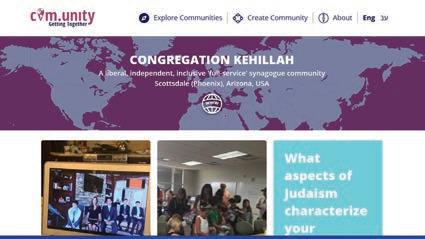
“Kehillah means community, and it’s a true community,” Sharfman said. “It’s a synagogue, yes, and we offer all the services a traditional synagogue offers. But we are a community also in terms of our connectivity and being with one another.”

It was also a good opportunity, Sharfman said, to reflect on Kehillah’s history. She is proud to see that the relatively young congregation stayed true to its original values, while

also growing and deepening the bonds within the community.
“Kehillah, in a lot of ways, was my dream, my vision. But at this point — as we talked about this last Shabbat with the congregation — it’s not just my dream, my vision anymore,” Sharfman said. “It started off with that but it’s now merged with those of everybody who is part of the community, and it’s becoming something much richer and more vibrant than I could have imagined on my own.”
Each photo on the homepage of the Com. unity Project comes with a story and a dozen more photos of a Jewish community somewhere in the world: Buenos Aires, Argentina; Serrastretta, Italy; Dubai, United Arab Emirates; San Diego, California; Be’er Sheva, Israel; Johannesburg, South Africa. In addition to the online version, visitors to Beit Hatfutsot will soon be able to explore and experience these communities through an interactive interface featured in the museum’s new core exhibit, which opens in January.
The mosaic of Jewish life that the project offers is emblematic of the museum’s mission, said Ronit Lusky, director of educational exhibits and international partnerships at the
Museum of the Jewish People at Beit Hatfutsot.
“Basically, it celebrates optimism and creativity and continuity of the Jewish people,” Lusky said.
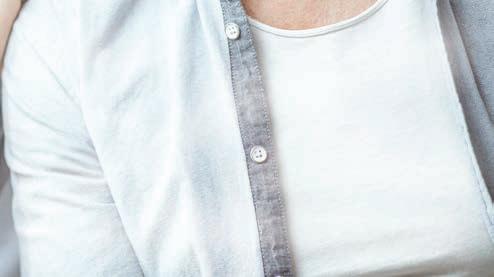

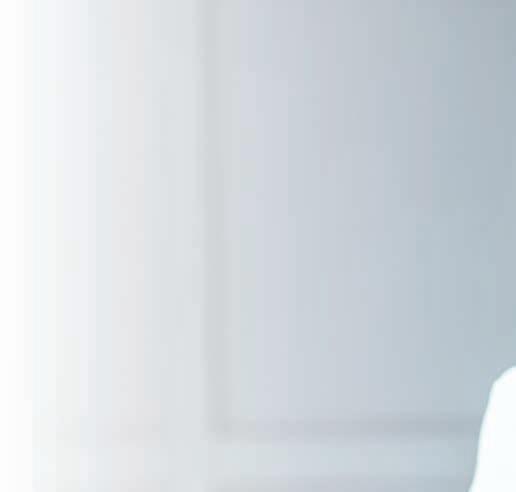
For Beit Hatfutsot, the Com.unity Project marks the culmination of an idea that staff initially conceived around two years ago, but weren’t able to implement until this year.

And the opening of the core exhibit in January signals the conclusion of an even longer journey, started nearly a decade ago, to renovate and rebrand the museum “with a new story, a new approach, a new narrative,” Lusky said.
A guiding idea behind the new history exhibit, Lusky said, is for visitors to look back on what they saw in the museum and, instead of saying “oy vey,” to say “hallelujah.”
“We’re celebrating culture, we’re celebrating continuity,” Lusky said. “There were pogroms, there was anti-Semitism — there still is. Of course there are hard moments and hard parts and they’re not hidden — they’re part of the story. But what is highlighted is the optimism in today.”
In addition to creativity and realism, the
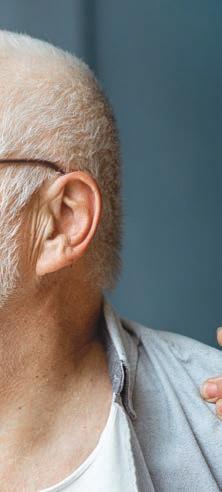
museum strives to make visitors’ experience in the museum feel personal.
“The museum doesn’t talk at them, it talks with them, and they can find themselves there,” Lusky said.
For Sharfman, who normally organizes an annual trip to Israel for congregants and other interested members of the community, Beit Hatfutsot is a frequent stop.
“It’s a really great place for American Jews to do a lot of learning about Jewish communities around the world, including their own,” Sharfman said. The Com.unity Project in particular, with its focus on not just synagogues but Jewish communities of all kinds, “is just very uplifting in terms of looking at the diversity and the dynamics of American Jewish life.”
Sharfman hopes to be able to lead a trip to Israel in fall of 2021. When she does, she’s looking forward to seeing the new exhibit, including Kehillah’s contribution to the Com.unity Project. JN
For more information or to view the Com.unity Project, visit com-unity.bh.org.il.
Hillel at ASU executive director wins Hillel International award for excellence
Hillel International recognized Hillel at ASU Executive Director Debbie Yunker
Kail with the Richard M. Joel Exemplar of Excellence Award this year at Global Assembly 2020, the organization’s annual conference, on Dec. 15. The award is offered to those who “embody Hillel’s culture of excellence,” the organization said, and this year recognized those who created “innovative Jewish experiences and meaningful connections” in the midst of the COVID-19 pandemic.
“There is absolutely no one more deserving of this award,” Hillel at ASU staff's statement read. “For the past eight years, Debbie has fearlessly led the team at ASU Hillel. Under her leadership, ASU Hillel has had immense growth in fundraising as well as doubling in staff size, building size and student engagement.”
This month, Congregation NefeshSoul welcomed incoming board president Amber Caulkins.
Caulkins is a high school English teacher who spent ten years working in the nonprofit sector. Prior to moving to Arizona in 2018, she led an effort to establish an international network of inclusive and welcoming mikva’ot at Mayyim Hayyim, a Jewish organization in Newton, Massachusetts. Since joining Congregation NefeshSoul a year and a half ago, she also served for a
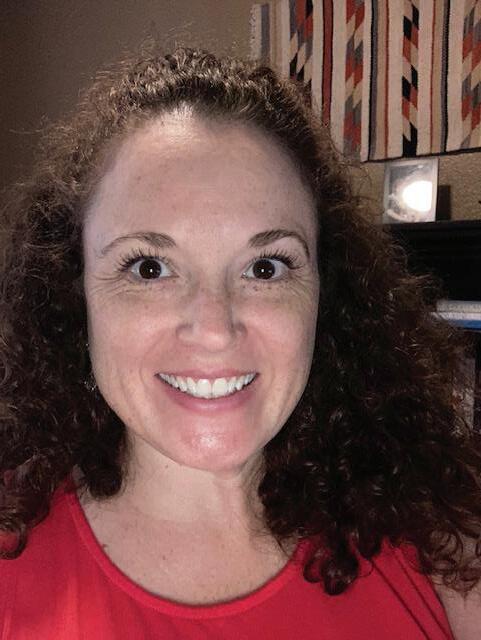
Wendy Black, a member of Congregation
Beth Israel, was named the new chair of the Programming Committee for the Women of Reform Judaism Pacific District in November. In the last month, she stayed busy rethinking how to engage members of sisterhoods in 13 states from Alaska and Hawaii to Arizona and Idaho.
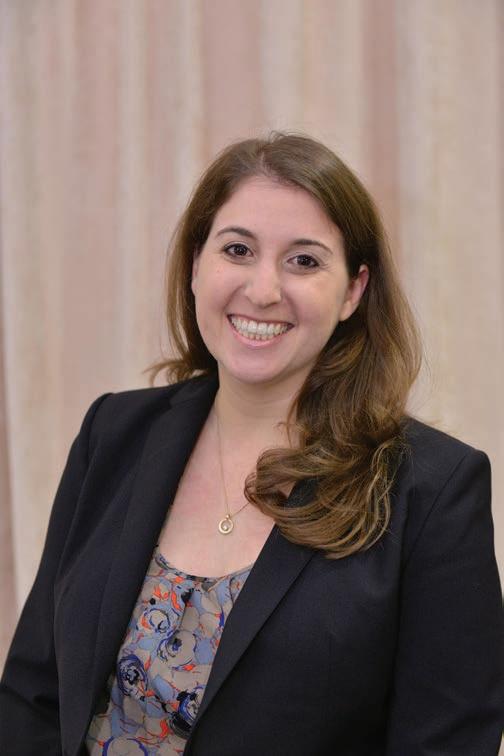
“This is really the time to have vibrant, dynamic programming, because our minds have to keep going — and away from what’s going on in the world, if possible,” Black said. “We still have to be growing educationally and spiritually. We still need to have some fun.”
Black’s path to chairing the programming committee began innocuously enough, with an informational WRJ Zoom call in May. “I thought, ‘OK, I’ll just drop in
Eight Hillel staff members at different stages of their career are awarded the honor each year. While finding out who won and celebrating the award winners at the annual Hillel conference is normally a special moment, Yunker Kail said, it wasn’t even on her mind as the fall semester came to a close.
Yunker Kail was surprised and pleased to learn that she was a winner of the Exemplar of Excellence Award on a Zoom call disguised as a staff meeting. When her assistant director told her that she needed to organize an extra staff meeting, Yunker Kail went ahead and prepared an agenda, only to have Hillel CEO Adam Lehman “Zoom-bomb” the call and deliver the news.
“It felt really special to win, honestly, particularly because you have to be nominated by someone else and to know that people think that highly of me is really meaningful,” Yunker Kail said. “And I
year as the chair of the ritual committee.
“I love the Jewish community, and I like to be involved in organizational development,” Caulkins said, adding that the role “allows me to still stay involved in that area but to do it in a volunteer capacity.”
While Caulkins grew up in Arizona, she and her family only recently returned to the area from the East Coast. A year and a half ago, while searching for a congregation to join in Greater Phoenix, her family found NefeshSoul.
“We just really immediately connected with the music and the rabbi and the
and see what they’re doing,’” Black said. She shared some of her ideas with WRJ leaders, and after Pacific District President Cher Krichmar began her two-year term in October, she offered Black the position. Black happily said yes.
She traces her passion for sisterhood to her time as co-president of the thenTemple Beth Israel Sisterhood and the social action committee in the same year. While Congregation Beth Israel no longer has a sisterhood chapter, during the initial stages of the coronavirus pandemic, she found the WRJ again and rejoined. She now considers the programming chair to be a “dream job.”
CBI congratulated Black for her new role in an email to congregants on Nov. 19.
“Wendy is a doting and devoted grandmother, partner, mother and friend,” Rabbi Sara Mason-Barkin said. “She is an avid learner who enhances our community

really appreciate even just people taking the time to complete the application and to work toward recognizing me.”
The virtual version of the award was also a nice way to win because it gave her a chance to avoid the spotlight. And at the end of a difficult year, she said, everyone deserves a little recognition.
“I think it’s important for the spotlight to be on our whole team,” Yunker Kail said. “Certainly I’m often the face of ASU Hillel, but I know that it’s really a team effort to accomplish all that we do for students.
“This has been a hard year for everyone and so I think everyone deserves recognition for getting through this year, whether it was leading an organization or just getting through your day-to-day life and how it’s changed,” she added. The award “is just a fun extra boost, but everyone deserves a little recognition for making it through 2020.”
people,” Caulkins said.
As president, Caulkins hopes that she can keep finding ways to help current members deepen their relationships in the community while also opening up the congregation to others who, like her, might be looking for the right fit.
“One of the things that is, to me, really important about this community is that it’s relationship focused,” Caulkins said. “We have great programs and all of those things, but it’s the relationships and the way that people form close relationships with one another that I think really makes it special.”
with her knowledge and compassion.”
As programming chair for the Pacific district, Black has already assembled an impressive array of plans, from new ways to approach holidays such as Tu B’Shevat, Purim and Passover to a social action project that looks at senior homelessness, “The Bubbe Project” that connects grandmothers with grandchildren virtually or in person and a program called the Ruth Bader Ginsburg Jewish Leadership Initiative designed to mentor girls ages 12 through 17 with leadership potential.
“We’re given an opportunity right now to really feel connected with each other,” Black said. “This has been hard, but this is the upside: We’re connecting in a way we just haven’t been able to before, because there’s more and more programming.”
Any Reform Jewish woman can join WRJ independently of a synagogue or WRJ-affiliated Sisterhood. JN
At first glance, the headlines were heartening: “In first, Israel recognizes three civil marriages performed online” and “Couples marry online … beat lack of civil marriages in Israel.”
But the marriages the headlines reported were not the result of some major change in Israeli law or religious custom. Rather, they were in reaction to the recent recognition by Israel’s Population and Immigration Authority of three civil marriages, mostly by accident.
Under current law, Israel only allows marriage between members of the same faith, and only in accordance with applicable religious law. For Jewish couples that marry in Israel, that means that their marriages must be conducted under the auspices of the haredi-controlled rabbinate. Civil marriage is not available.
For many years, thousands of frustrated Israelis — particularly those with nonOrthodox or secular inclination — traveled to Cyprus (or elsewhere) to be married in a civil ceremony, and returned to Israel with certified documentation of a state-authorized marriage, which was then recognized and accepted by Israel.
During the pandemic, international
travel has been more difficult. As a result, many Israelis were forced to delay their planned weddings. But three couples discovered that they could marry online, via Zoom, through the
marriages were reported by Israel’s Kan Bet public radio, the Population Authority backtracked and claimed that its acceptance of the Utah marriages was a mistake.
state of Utah. They followed through, and submitted their documentation — marriage certifications from the state of Utah — to Israel’s Population and Immigration Authority, which recognized the unions.
The three Israeli couples — including one lesbian couple — discovered quite a loophole. When the online civil
Last month, with the first rollout of COVID-19 vaccines, we saw the beginning of the end of the pandemic. We were happy to see frontline health care workers and the elderly get the vaccine, and are encouraged by public efforts to encourage all segments of the population to get vaccinated. Vaccines offer the prospect of a “return to normal,” and we celebrate the fact that the potential cure was achieved in record time.
Israel has emerged as a success story in the vaccine rollout process. The Jewish state began vaccinations on Dec. 19 and has already inoculated more than 12% of its population, the highest per capita rate in the world. Prime Minister Benjamin Netanyahu deserves credit for negotiating early in the pandemic to secure vaccines, and Israel has shown remarkable efficiency in distributing the vaccine through the country’s national health care system.
Here in the United States, the rollout has been messier. Of the announced goal of vaccinating 20 million people by the end of 2020, only about 20% have received the vaccine.
According to reports, the process of actually getting the vaccine to people has been a challenge. Since there is no national distribution plan, the vaccine delivery burden has shifted to state and local governments, whose resources
Meanwhile, Interior Minister Aryeh Deri, of the haredi Shas party, has sought to control the issue. He has ordered the Population Authority to stop processing similar applications immediately. While there are no plans announced to reverse the three marriage certifications, it is still possible that the “mistake” by the Population Authority will lead the
long-simmering battle over civil marriage to Israel’s Supreme Court, where the legal issue should be decided.
Over the past several years, there have been efforts in Israel through a coalition of Reform, Conservative, Modern Orthodox and secular Israelis to address the desire for a civil marriage alternative in Israel, as well as authorization for consenting Jewish Israelis to be married in a non-Orthodox ceremony. Those efforts have gained little traction, since they fell victim to Israel’s familiar politically driven coalition politics, which have ceded control of the rabbinate to haredi parties. The haredi rabbinate has no interest in empowering non-Orthodox solutions to personal status issues.
The three internet marriage cases present an interesting opportunity to address the issue of civil marriage through the courts, rather than through the frustrating and tone deaf political process. That would be a good thing — because, after all, marriage choices by consenting adults is, in the first instance, a legal question, rather than a political or religious one. JN
lack of trust in the medical establishment, and fraud. Polls indicate that more than 40% of Americans do not plan to get the vaccine. While it is difficult to deal with stubborn anti-vaxxers, a concentrated education program in other
for shady dealings. And the pandemic is no exception. One episode of particular embarrassment to the Jewish community took place in New York, where ParCare Community Health Network, a network of health clinics owned by a Chasidic Jewish leader from Brooklyn, is being investigated for improperly obtaining doses of the coronavirus vaccine and distributing them in contravention of New York State guidelines. While many who received the misdirected doses did not know of the alleged underlying improprieties, they did have to know that the opportunity they were given was inconsistent with state guidelines, which should have been reason to inquire further.
are already stretched by the surging coronavirus. As a result, how people receive the vaccine and even who can receive it varies from state to state and adds to confusion.
At least two other factors affect distribution efforts: misinformation and
hesitant communities could help change perceptions and increase understanding of the value of the vaccine. We encourage those efforts.
But we’re not sure what to do about coronavirus vaccine scams. Public vulnerability is routinely fertile ground
In the weeks ahead, we hope that the process will regularize, that a workable national distribution plan will develop, that orderly inoculation will proceed and that everyone who wants the vaccine will get it. As that process unfolds, we must be patient and vigilant. Continue to wear masks, avoid crowds and observe social distancing guidelines. Working together, we can help achieve universal immunization. JN
We are a diverse community. The views expressed in the signed opinion columns and letters to the editor published in the Jewish News are those of the authors. They do not necessarily reflect the views of the officers and boards of the Jewish Community Foundation, Mid-Atlantic Media or the staff of the Jewish News. Letters must respond to content published by the Jewish News and should be a maximum of 200 words. They may be edited for space and clarity. Unsigned letters will not be published. Letters and op-ed submissions should be sent to editor@jewishaz.com.
ZOOM, THROUGH THE STATE OF UTAH.
A CONCENTRATED EDUCATION PROGRAM IN HESITANT COMMUNITIES COULD HELP CHANGE PERCEPTIONS AND INCREASE UNDERSTANDING OF THE VALUE OF THE VACCINE.
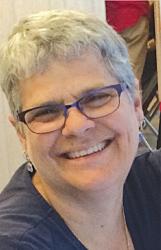
he announcement of COVID vaccines should have been cause for celebration and relief. It was the first sign that we might actually beat this virus, come out of our homes, regain social contacts and rebuild the economy. It was a sign of hope that our Jewish institutions might survive this endless crisis, and that the country might turn the corner. It should have made us all happy, hopeful, optimistic.
What I’m seeing and feeling is actually quite different. While some of us are relieved and anticipating a return to a more open life, I think that many have slipped deeper into sorrow.
Whether it is because of the darkness and cold of winter, the increasing death toll, the realization that 2021 will be a continuation of 2020, the ongoing political chaos and inaction, the pain of loneliness or all of the above, what I’m seeing and hearing is a community that is more troubled and more worried.
It’s as though the light at the end of the
Ttunnel is simply too far off, too unreliable. Grief unites us in increased hopelessness.
We are also approaching the one-year anniversary of COVID. It “should” be time for the unveiling, a way in which we mark time from the sharp pain of loss to an understanding of the permanence of death. Our grief resurges, accentuating the passage of time and status.
Therapists know about anniversary reactions, our bodies’ way of reminding us that once, in this season, bad things happened. We know grief in our kishkes, even when we don’t know it in our heads.
If adults are experiencing this level of grief, how much more so for our children? If we have learned that our government can’t help us or protect us, what do our teens and young adults now know about their futures?
I am worried about our kids. Not about their education, although that matters a lot.
I am more worried about their emotional lives, about the feelings that roil around in them. I am worried about what they have seen as their parents lose faith in government and community.
I am worried that our grief makes it more
and more difficult to form attachments, whether to people or organizations. I am worried that we will try to “return” to our previous lives without mourning this time, what we’ve lost and what we’ve learned. For many of us, leaving our homes and returning to communal spaces will be enormously difficult. It’s harder to regain trust that’s lost than it is to trust innocently. We’ve lost trust in our society, in our trains and planes and grocery stores and — most importantly — other people. Rebuilding that trust will take work on many levels. Work between individuals, work within organizations, work across society. And we’ve got to begin thinking about it now.
Trauma-informed care teaches us that we cannot simply put the past behind us. That’s wishful thinking. We need to re-enter the world in intentional, conscious ways. Our institutions must plan for gentle entry, for processing time, for inefficiency and tears, for intense separation anxiety, from both parents and children.
The five basic principles of traumainformed care are: safety, choice, collaboration, trustworthiness and

fter a horrible year of pandemic, poverty and polarization, will the coronavirus vaccine soon return the Jewish world to a semblance of normalcy? That’s the question without a clear answer as 2021 begins amid another surge of coronavirus cases, as well as the first rounds of vaccinations that will hopefully put an end to the plague.
The American Jewish world that will emerge from the crisis understands that back to pre-pandemic business as usual isn’t an option or even something they want to do. Some believe that their recently acquired dexterity with technology is a formula to better help them survive the challenges that were facing them before being sent home to wait out the pandemic. Yet even amid the sometimes forced optimism we’re hearing from Jewish leaders, they also know that even their new skills are no substitute for directly engaging those they are supposed to serve.
Jewish life, whether religious or organizational, is inherently communal. If
Athe old cliché held that you can’t be a good Jew on a desert island because you need others to perform mitzvot, it’s equally true that for all of the herculean efforts expended on connecting with people during the past year, real communities aren’t virtual.
Synagogues, organizations and philanthropies have all had to reinvent themselves in one way or another since the first lockdowns in March. And, as is characteristic of Jewish culture, many are sounding an optimistic tone and talking about how they turned lemons into lemonade. Some think the lessons they learned about how to wrangle the Internet, Zoom meetings and services, webinars and even YouTube videos instead of relying solely on in-person gatherings — as was the case with most of them before the virus struck — has helped them become more user-friendly and able to reach constituents in ways they’d never previously contemplated.
Indeed, the brave new world of Zoom Jewish life is sometimes described as an improvement. Some, though clearly not all, non-Orthodox synagogues claim that more people often log in for services than showed up in person for
them in the past. The organizational and philanthropic world has also learned that virtual events, informational lectures and symposiums, as well as virtual fundraising “galas,” can enable them to provide far more programming for content-hungry members and consumers than they previously undertook. Equally important, these online gatherings are generally attracting far bigger audiences watching on home computers, tablets and phones while costing a small fraction of what it took to put on programs that required people to actually attend in person.
Nor will the Jewish world be likely to quickly abandon online events even after the pandemic has been quelled by mass vaccinations.
It’s a given that a certain percentage of Jews — both haredim and secular believers in New Age theories — will listen to the misinformation spread by the anti-vaxxer movement. Even before the current crisis, it was a factor in reviving the spread of measles — a disease that had already been wiped out by scientific advances. If anything, the conspiracy theories and lies that duped many people into refusing other vaccines will become even more
empowerment.
As I look at these principles, I recall that I wrote an article on them at the beginning of COVID. While these principles could inform our work in April, we need them even more now, as we enter this next stage of COVID. How are you providing opportunities for individuals to process what we’ve lived through, our losses, our sorrows? What is your institution creating to comfort people? To make them feel safe?
Each step of COVID-19 has brought trauma to us. We have learned new behaviors. We have spent 2020 adapting and readapting. It’s been exhausting. We are worn, our clergy is worn, our Jewish professionals are worn. I often describe resilience as a rubber band. It returns to its original shape after we stretch it, but repeated or continuous stretching decreases the elasticity. After a long stretch, it cannot recover its original shape.
We have been changed, deeply and permanently, in ways we cannot yet articulate.
persuasive now that the traumas of 2020 have increased the susceptibility of many people to such tactics.
Yet fear of the virus won’t soon disappear, even if a critical mass of the population is given the vaccine and a certain degree of “herd immunity” is created.
It’s true that a lot of people can’t wait to return to their old lives and the way they previously lived. But the impact of the months spent under lockdown and the constant drumbeat of information about the perils of going about unmasked or without social distancing will have a disproportionate impact on both the very young and the old.
For children, experiencing the new normal of the pandemic is likely to be one of the formative experiences of their lives. Much like those who grew up in the Great Depression, and who carried the fear of poverty and want with them for the rest of their lives even after they achieved affluence, fear of contagion will remain with those youngsters who were forced to shelter at home lest they infect or be infected by
What is in a name? Is it just an outer expression, an external method of identification?
additional koiach or “strength” to strive toward our individual purpose.
JAN. 8 - 5:20 P.M.
JAN. 15 - 5:26 P.M.
JAN. 9 - 6:18 P.M.
he gabai at the synagogue approached Mr. Goldfein to give him the honor of an aliyah at the Torah.
“What is your Jewish name?” he asked. Traditionally, we are called up by our Jewish name. And Goldfein replied, “Rachel Ben Moshe.” The gabai — thinking he heard wrong — asked again. He received the same reply.
“Rachel is a female name, perhaps you can tell me the Jewish name that your parents chose at your bris?” he delicately asked Goldfein.
Almost whispering, Goldfein responded, “I have been going through some financial troubles — everything is now in my wife’s name.”
Shemot, the name of this week’s Torah portion, translates to “name.” As the opening verse states, “And these are the names of the children of Israel.”
STONE
CONTINUED FROM PAGE 12
There is trauma in the potential release from this nightmare. The trauma of visiting graves, of return to public spaces. The trauma of reestablishing relationships and new habits. The trauma of empty chairs. We know that the risk of suicide increases as people begin to feel a bit better from deep depression. Will we see a surge of increased depression, suicidal thoughts?
And we’ve learned important lessons. Who are our true friends? Some relationships have deepened and some sidelined. Kids have gotten closer to their siblings and parents. Some of our kids are happier in virtual school. Families have been strengthened and families have been torn apart.
I hope we can be actively intentional in the ways we reopen. Camps will not simply be places of joy, but also places of loss. Our kids will return to camps, schools, synagogues changed. We will all be processing this horrible year for the rest of our lives, inevitably altered. Any reopening must include an awareness that we are not the same people we were.
The ground hasn’t been solid for a year. It’s not going to be solid again soon. And, even then, it will be new and different ground. JN
Betsy S. Stone, Ph.D., is a retired psychologist who currently teaches as an adjunct lecturer at Hebrew Union College-JIR. She is a regular contributor to eJewish Philanthropy, where this piece was first published.
You probably know someone who, as their life progressed, didn’t identify with their given name or nickname and swapped it out for one they liked better.
TSometime between fourth and sixth grades, my cousin did just that, changing from the more childish nickname Dovi to his complete name Dovber, to express more maturity.
Is that all a name is, an identification, which one can swap out based on how they’d like to be represented?
In the opening words of the Torah portion, Rashi teaches that G-d counted each of the children of Jacob by their individual names to express his love for them. When counting by number, we express how each thing is equal, not noticing individual differences and qualities.
However, when counting by name, each person’s individuality is accounted for, thus highlighting how we are all different, with different strengths and qualities, yet still united. Rashi is teaching that when G-d counts us and shows his love for us as an individual, it gives us
TOBIN
CONTINUED FROM PAGE 12
COVID-19. The assumption that these children will be quick to embrace the old paradigm of Jewish life may be misplaced.
Equally affected are the elderly who were, unlike the kids, the principal sufferers during the pandemic. Anyone who assumes that older people, who have had it drilled into them that they are the major target of the disease, will soon be venturing out to be part of crowds or attending indoor events or services even if masked and inoculated is probably mistaken.
That’s particularly significant for Jewish institutions. Not only does the Jewish population skew older than most other demographic groups. Older people were and still are the backbone of nonOrthodox Jewish organizational life and constituted the overwhelming majority of those who were likely to show up for any sort of event or discussion, as well as services. That will impact attendance at in-person events in the Jewish world for years to come.
All that means that the Zoom paradigm we’ve gotten used to in the last 10 months is likely to become something of a permanent aspect of synagogue and organizational life.
But will a Jewish world and synagogues that operate primarily in cyberspace with the instant access and mobility that implies be enough to sustain the institutions that
In old Jewish custom, when one — G-d forbid — fainted, someone would whisper the person’s Jewish name into his ear. One’s name is directly connected to their soul, by reciting his or her name, they were calling the soul back into the body.
In other words, our Jewish name is directly connected to our soul, the vibrancy and purpose of our being alive and our personal life mission.
Our sages tell us that our forefathers were redeemed from Egyptian exile by merit of three things: They didn’t change their Jewish names, clothing or language. As much as they assimilated into the Egyptian culture and way of life, they remained different, constantly connected to G-d and awaiting the redemption.
Upon arrival in America from war-torn Europe, the Chabad Rebbe understood the pulse of the waning Jewish life in America. In the 1950s he began a campaign of Jewish pride — through outdoor Jewish parades and events — to turn the tide away from the assimilation rampantly affecting the Jewish community.
The Rebbe understood that Jewish
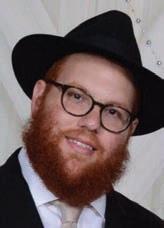
JAN. 16 - 6:24 P.M.
pride, like that expressed in a Jewish name, is the answer to the equalizing and minimizing of Hitler’s numbers — may his memory be cursed.
As we await the arrival of Moshiach and the era of world peace, it is not enough to be Jewish at home and blend in on the streets. We need to feel strong Jewish pride, to be proud of our Jewish names, to be proud to be recognized in the world as a Jew.
So, to suggest a Jewish pride action, let us strengthen ourselves in the mitzvah of ensuring a kosher mezuzah scroll on our front doorpost, visible to all, and show how proud we are to be Jewish. JN
have transitioned so much of the efforts to reflect the new reality?
To some extent, that might be true. But as is the case with the rest of the economy and other sectors, including education and the arts, it may be a case of the rich getting richer and the poor getting poorer.
If you are a potential consumer of religious or Jewish content stuck at home, then you have a lot more choices now than you might have had a year ago. But that also means that if you want to watch a religious service from home, your local synagogue is now competing against large institutions from around the world. The same is true for other sorts of activities, including philanthropic groups. Small local groups are at a disadvantage in our brave new Zoom world, and it would be shortsighted to ignore that fact or to expect that the impact on their futures won’t be significant.
Yet as much as technology threatens to be as important to teaching and organizing as other skills, it would be equally foolish to imagine that these virtual skills can replace the impact of in-person services and gatherings. It also can’t replace efforts like kosher-food delivery, visits to senior homes and to hospitals, Jewish holiday packages and other hands-on charitable work.
Just as has been proven largely true of
education, where online efforts are a poor substitute for traditional schooling, this also applies to those tasked with building a connection to the broader Jewish community or inculcating the principles of faith or peoplehood. Indeed, for all of the often unfair abuse that has been directed at Orthodox institutions that have not relied exclusively on Zoom as have the non-Orthodox, no one doubts the power that gathering together has had on their ability to continue to inspire their constituents.
The notion that other sectors of the Jewish world can ignore those lessons while boasting of their new technological skills is wrong. At some point — whether it is on a more limited scale or not — synagogues, groups and other institutions must bring Jews back into the same room with each other. The business of building and maintaining a community will have to involve a large amount of virtual programming going forward. Yet real communities are not Facebook groups, listservs or Zoom gatherings. Without peopleto-people contact, the values that link the generations are lost. The greatest Jewish challenge for 2021 will be in remembering that. JN
Beth Ames Swartz, 84, was honored recently at the Fifth Anniversary Shemer Honors Event. The Shemer Arts Center celebrated her for a successful 60-year artistic career, as well as being someone who encourages and assists aspiring artists.
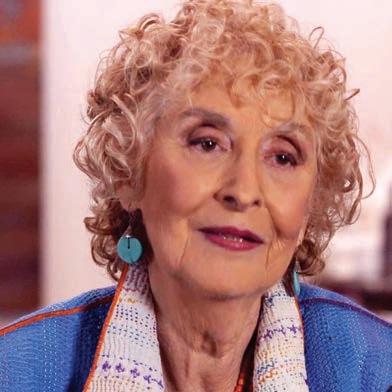
“When we start determining our artists every year, we get a lot of feedback from the community, and Beth’s name came up several times,” said Shonna James, president and executive director of the Shemer Arts Center. “This year, we chose Beth because of her length of career, her tremendous successes and having so many exhibitions and collections all over the world.”
Swartz is well-known in Greater Phoenix for being a mentor to artists and for embracing the artistic community with her “generous heart,” said Flo Eckstein, who calls Shemer “a jewel in the city of Phoenix.” The money raised in the current Shemer capital campaign will go toward expanding the existing space in order to make room for
Duties: ensures safety & reliability of transmission sys by conducting pwr ow, transient stability, short circuit, & other pwr sys analyses. Utilizes sys sim sftwr such as GE PSLF & CAPE to plan the expansion of the pwr sys in the planning horizon & maint acceptable lvls of sys rel.
Drug test & bkgd check req. Min. Req.: BS in elect engineering or rel & 5 yrs exp Or alt MS in elect engineering or rel & 3 yrs exp. Submit resume to: talentacquisition@apsc.com
Include Job Code: JN300
more classes and exhibit space, Eckstein said.
“She’s taught me a lot about the creative process,” said Eckstein of Swartz, who was featured in the Jewish News’ Best of Arts & Culture magazine two years ago. “She’s very sensitive and thoughtful. This award is much-deserved. She’s a revered Arizona artist who is internationally known. And she paints with all her heart.”
Growing up in New York with parents who were scientists, Swartz couldn’t imagine her life without art. Her family valued the intellect above everything, and Swartz said she was often referred to as “the emotional one” in the family.
As a little girl, her mother gave her a paint set. “It became the pipeline to my sanity,” Swartz said. Swartz grew up in a household where “mitzvah doing” and living an ethical life were highly valued principles.
Swartz attended the High School of Music & Art in Manhattan, graduated from Cornell University and earned a master’s degree from New York University before starting her life as an artist and — as she’s sometimes been labeled — an eco-feminist.
After graduation, she had an artistic breakthrough on a trip down the Colorado River with her husband. She felt a bond with the earth, visualizing faces and bodies popping out of the ground. Swartz had her sketchbooks and painted her way through the trip.
“I paint to understand life and try to understand how the universe works,” Swartz said.
Swartz uses words as well as symbols in her work that represent philosophical and religious concepts. Various aspects of Judaism find their way into her work, but so do other religious traditions: Buddhism, Native American religions and Christianity.
Her latest work, the subject of Shemer’s exhibit, is the result of a three-year study in Sufism, a mystical branch of Islam, titled “Purification of the Heart.”
“If you could say I had a brand, it would be the sacredness of all life,” she said. “My art deals with respect for one another. All life is sacred and we need to treat each other with love and compassion.”
After completing her “Air, Earth and Water” series inspired by her explorations of the natural world, Swartz turned to a series using both fire and earth to find the beauty that can come from destruction.
In traveling to Israel while making “Israel Revisited,” Swartz sought to highlight her Jewish heritage — and the notion of tikkun olam.
“We need to learn to treat each other better and with compassion and love,” Swartz said.
While in Israel, she found 10 sacred places to represent biblical women symbolizing the Shekhinah. She developed a profound interest in Kabbalah while developing the work.
Matthew Baigell, a professor of art history, wrote about Swartz in his 2020 book “Jewish Identity in American Art.”
“The combination of feminist and Kabbalist lines of thought are manifested in Swartz’s work ‘Israel Revisited,’” he wrote. “This work is, to my knowledge, among the first, if not the first, contemporary, large-scale feminist project in which the Jewish subject matter is derived from the Bible and Kabbalah, and, as such, it is among the most historically significant Jewish American artworks of the 1980s.”
To create “Israel Revisited,” Swartz destroyed and burned rice paper marked with color and metallic pigment, then buried it before creating scrolls with the remains using the earth itself as a pigment.

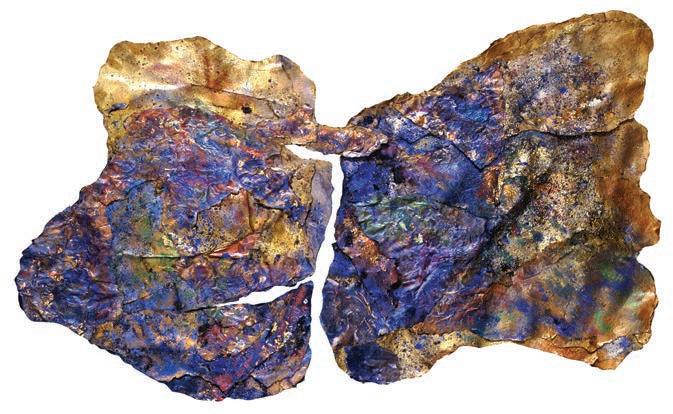
“In order for humanity to survive, we
must be able to transcend the pain. And we must be able to transcend the anger and rage because underneath there are only two real forces: love and fear,” Swartz said. “As we heal ourselves we hope to heal the planet.”
The series was part of an exhibit at the Jewish Museum in New York for two years.
Along with the Shemer award in 2020, Swartz celebrated 20 years of her Artist’s Breakfast Club.
Twenty years ago, she called together a group of six local artists to discuss their work over breakfast. Considering that artists generally work in solitude, Swartz’s goal was creating a community where people could exchange ideas and support one another, so the group started meeting once a month.
“It just evolved,” she said. “It doesn’t necessarily have to be breakfast. It can be a lunch, it can be a dinner, it can be no food. A lot depends on the people that I ask to do the event — I like to cater to their needs.”
Beginning as a loosely planned get-together, the meetings got more structured as time passed. It became yet another way for her to nurture the artistic community of Greater Phoenix.
These two celebratory moments in an otherwise difficult year gave her a sense of gratitude: “We need to celebrate the synchronicity in life.”
As for being honored by Shemer, Swartz said, “It felt very good to be recognized.”
Shemer held its awards ceremony virtually this year due to the pandemic, and drew 110 attendees.
The center will feature Swartz’s new artwork in an exhibition that runs through Feb. 18, 2021. JN
Additional reporting by Shannon Levitt

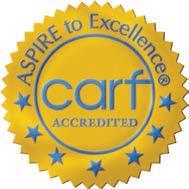
Ifind myself reminded during the COVID-19 pandemic of a silly riddle from my boyhood: What do men do standing up, women do sitting down and a dog does on three legs? Your hint is that Dr. Anthony Fauci said it may never come back.
The answer is the handshake. We must acknowledge the possibility that future generations may be stumped by this riddle. And sadly, I also recognize that as a society we are experiencing touch deprivation.
In times of strife, a pat on the hand or a gentle hug can communicate the sentiment, “I feel your pain, I see you and I understand what you are going through,” better than words alone. In the present state of uncertainty, the closeness we crave is the pandemic’s forbidden fruit.
The healing power of physical touch can be measured. Doctors have found through laboratory tests such as MRIs, that there are evident changes in the patterns of brain activity during touch.


A great big bear hug can increase hormones associated with pleasure such as endorphins and oxytocin and decrease stress hormones such a cortisol. Physical touch can help elevate mood, enhance your ability to fight infection and even help you sleep better.
For those who are riding out the pandemic in isolation, this information is not meant to rub salt into the festering wound of being physically distant. You can still engage in self-care to mimic physical touch and have many of the same benefits.
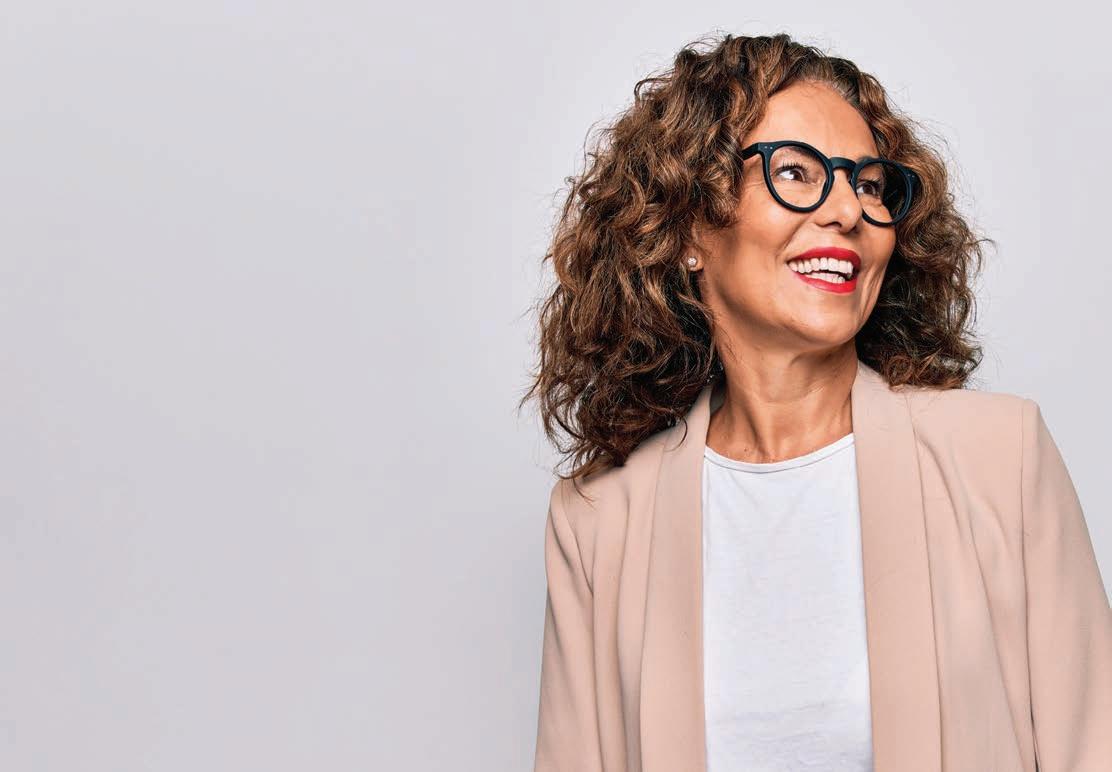
It is empowering to bolster your connection with your physical self. Here are a few instructions for self-massage:

• Massage your upper back. Take a tennis ball and place it in the bottom of a sock. Flip it over your shoulder and lean back against the wall, with the ball situated in the section between the shoulder blade and spine. Move your back around, with squats or hip adjustments, and the ball will follow. Deep breaths will also add massage, because it widens the rib cage.
• Massage your feet. The feet support your entire body, so keeping them in good shape helps you maintain balance and posture. Roll a tennis ball under your foot putting pressure on the ball when it meets the arch. Keep a ball under your desk so that you can roll out your foot when you jump on your computer.
• Massage your neck. Interlock your fingers and use your thumbs in circular motions. Use a good body lotion or massage oil so that your touch stays light.
In addition, use a loofah, long-handled brush or soaps with exfoliants in them when you shower. These
seemingly routine practices can move the skin and save it from being deprived of stimulation.
Stretching, taking baths, using warm moist heat packs can also simulate touch.
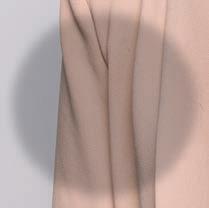

I am heartbroken thinking of our isolated elderly who have not been able to hug their children and grandchildren. I treasure the memories I have of visiting my Granny, at least once a week.
Our visits began and ended with a long embrace, and every time Granny said, “You give the best hugs.”
And I was thinking the same about her. JN
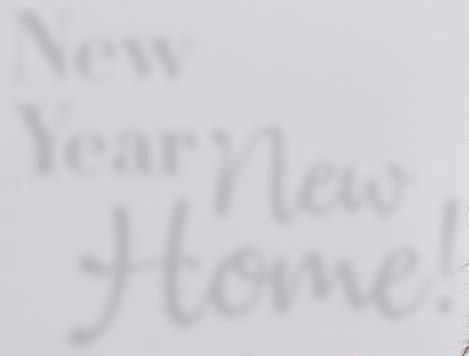
Alli Goozh had no way of knowing the strange way 2020 would play out when she took a chance and left a corporate career in pharmaceutical and medical device sales in October 2019 to launch a life coaching business.
She saw making such a significant life change as a first step toward realizing another years-long dream: opening her own barre studio — though she didn’t know how quickly that would happen. Instead, she focused on teaching empowerment workshops for her new business while she taught barre classes on the side and waited for a time when adding a studio would make financial sense.
Early in the course of her career transition, the coronavirus pandemic struck. But Goozh found a silver lining. The owner of a local barre studio who also worked in health care no longer had the time or resources to operate her studio.
In one fell swoop, Goozh finally had her barre studio and simultaneously saved a business. Rebarre North in Scottsdale allowed Goozh to merge her two new businesses into one overall wellness center — one that had to be exclusively virtual for several months.
“People just keep encouraging me to reach out and let people know I exist,” Goozh said. Still, since starting her new business, it’s been “a mixed bag.”
But her willingness to adapt to new circumstances is helping her slowly build a following, and she’s seeing some success.
In November, Goozh led a body positive workshop for Martin Pear Jewish Community Center’s Embody Love Workshop event. “Now, more than ever, we all need some positive vibes,” said
Nicole
is a breath of fresh air and provides a safe space to learn and grow.”
Goozh was also featured as a trendsetter last fall in Arizona Foothills Magazine online.
“It’s like building a whole new business and attracting a whole different pool of potential clients because anyone with any internet anywhere can connect,” she said.
For her clients who are road warriors, being virtual has been especially helpful. One client told Goozh that while she was traveling across the country in her RV, she took time out to log in to Goozh’s barre class, while another told her of doing the same from a remote cabin.
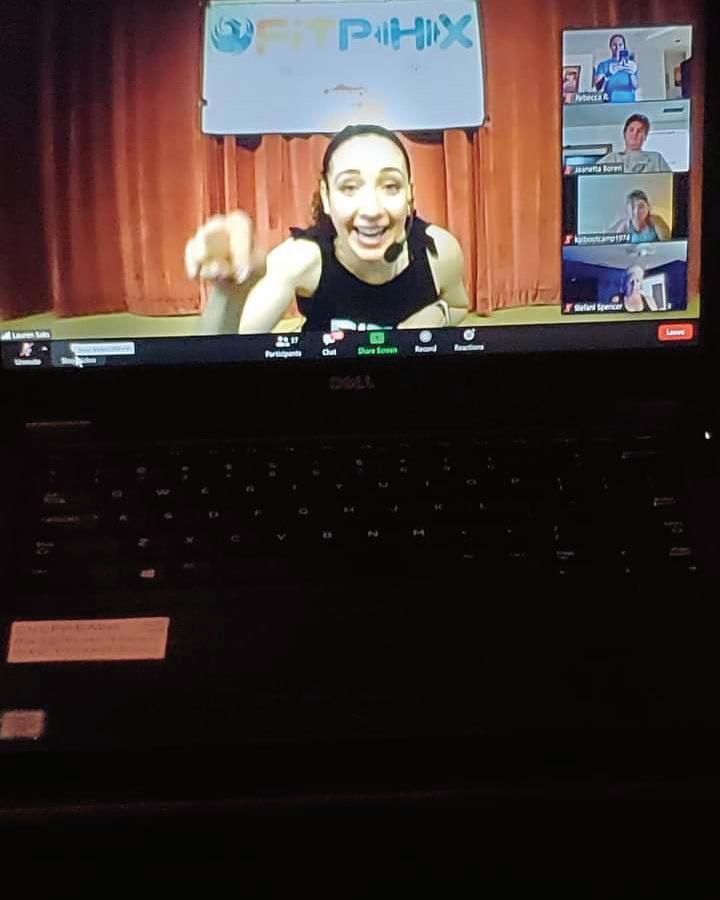
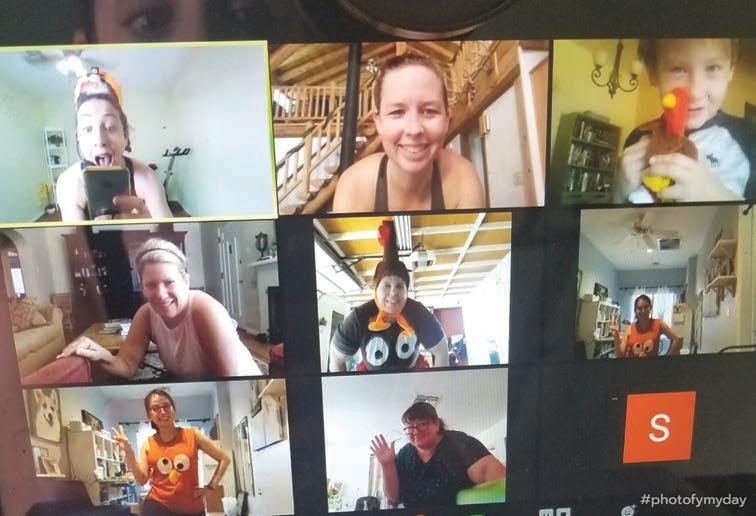
At present, the state allows in-person classes as well. The class capacity is limited to 25% which means no more than five people. “I was worried the clients would see that as a detriment, but they’re actually enjoying that they’re getting a lot more one-on-one attention and personalized focus,” she said.
Wearing a mask while exercising isn’t ideal, but only one client decided not to return. The others said it’s not as bad as they thought. Goozh also made changes to accommodate people, like lowering the temperature because masks can make people feel uncomfortably warm.
“I have a video on Instagram about what kind of mask to wear and how to wear it,” she said. She also encourages her students to take breaks.
“Thankfully, barre — even though you can work up a sweat and get your heart rate up — it’s not like intense interval training,” she said.
With one dream finally realized, Goozh looks forward to what
the high-risk demographic.
“I couldn’t risk bringing something home to my baby that he could pass on to my parents,” she said. “I couldn’t fathom it.”
Saks resigned and turned to the internet instead. She spent time researching what would be most effective and engaging for an audience. She scrolled through Facebook watching several fitness classes picking and choosing what would work for her and her followers. Soon she was offering live classes on her website. She also has an on-demand section of her website for their convenience.
“I did a lot of research, and I know more about audio visual than I ever thought I would know,” she said. Before she uploads videos she ensures they meet her criteria of good sound and visual
and encourages them to keep their cameras on so she can help them with form and technique.
But she’s aware from earlier experiences teaching women-only classes that often people value modesty — especially a number of her Jewish women students. The virtual world of fitness gave her more of an opportunity to accommodate those preferences.
Even when in-person exercise classes become safe again, Saks said she will continue teaching virtually as well.
“I surprisingly love teaching virtual fitness,” she said. “I actually resisted it for quite some time. I would say, ‘I’m not teaching virtually, I love teaching the people. I’m not doing it.’
But I will definitely continue teaching in person and virtually once this is over.” JN
Two Jews, three problems. That’s the mathematics behind “Shtisel,” the runaway hit Israeli dramedy about a family of haredi Orthodox Jews. In 2020, the show’s creators and cast faced down a worldwide pandemic to shoot a third season, coming to Netflix in the spring.
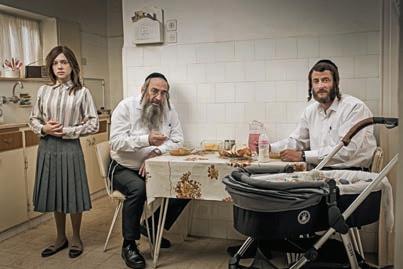
And oy, the problems! The tsuris this Jerusalem family faces was manifest in the Season 3 opener, which a paying audience previewed online during Chanukah. The Temple Emanu-El Streicker Center in New York City, which staged a pre-COVID inperson talk with the stars of “Shtisel” in 2019, sponsored the Dec. 17 preview, which included a virtual panel discussion with the show’s actors.
It’s been five and a half years since production of the second season wrapped. Are the characters older and wiser now? Having watched episode 1, I can say that the answers are “yes” (four years of “Shtisel” time have passed) and “I don’t think so.” Everybody loves “Shtisel” not because the family spends each episode learning Gemara or reading Psalms. It’s because they’re busy exercising their human foibles.
Yes, people plan and God laughs. “God, what do you want from your Jews?” Rabbi Shulem Shtisel, the patriarch, cries out during the episode. But sometimes people just run off the rails all by themselves.
Shulem (Doval’e Glickman) provides a proof text. The day starts off badly at the cheder where Shulem is principal. One of the boys has stolen from a teacher and Shulem goes to the classroom to chastise the boy. Instead of being humbled, the little stinker defies Shulem, who gives the kid a smack in the face.
Problems ensue.
Akiva (Michael Aloni), the son, the artist, is still painting. The show’s own McDreamy is now a father himself, now married to Libbi (Hadas Yaron).
But there are money problems. And being three days away from eviction for not paying the rent isn’t Akiva’s worst problem.
And Yossele, Lipa and Giti’s son, who will turn 19 on Purim, would rather learn Torah than have a coffee with the girl the matchmaker has set him up with.
Problems.
But iron-willed Giti (Neta Riskin) perseveres and Yossele (Gal Fishel) agrees to the meeting, if for nothing else than to keep the family peace. Driving his son to the appointment, Lipa (Zohar Strauss) has some fatherly advice in favor of rushing into marriage: “The less girls you meet, the less you’ll have to compare them to and the happier you’ll be in life.”
Or as Shulem notes elsewhere: “When life hands you lemonade, take it.”
Yossele meets the girl, whose name is Shira, and a shy chemistry ignites between them. There, at a table in the hotel lobby, he sings to her. She confesses that she goes to the Ramot Forest “when I’m scared.”
“Describing yourself as being scared takes courage,” Yossele tells her.
He’s smitten. “We had an amazing connection,” he tells his parents the next day.
“I love her.”
Very. Big. Problem.
On “Shtisel,” the problems expand exponentially. There are so many of them in that first episode that there wasn’t any room for Ruchami’s problems. Played by Shira Haas, Ruchami sits behind a desk in the Talmud Torah’s office in her brief scenes with Shulem, her grandfather.
Since becoming an international phenomenon, there has been clamor for more from TV’s favorite halachically observant family.
So what took Season 3 so long?
“It could have been much longer.”
That’s “Shtisel” co-creator and writer Ori Elon speaking during the virtual panel discussion. For Elon, the characters weren’t packed away in mothballs during the hiatus.
“I always feel the Shtisel family is living their own lives without me. I imagine them sitting around the table without me,” he said.
For the actors, playing a character is like riding a bicycle.
“It was great to come back to him,” Glickman said, of Shulem. “I know him.”
“The majority of the work of getting to know the character we did eight years ago,” Riskin said. “Even if you haven’t met them for five years, it doesn’t matter.”
Eventually, the questioning from SiriusXM’s Jessica Shaw reached answers that the cast wouldn’t give. The audience was treated to polite responses to variations of “So what’s going to happen this season?” They boiled down to, “I can’t tell you. You’ll have to watch the show.”
Riskin delivered the most succinct reply. She pursed her lips and shook her head no.
It was dinnertime on the East Coast, nearly midnight in Israel. Despite the late hour, the Israeli actors each lit a menorah.
The yoke of Torah requires one set of obligations. The necessity of promoting a TV show another. The cast of “Shtisel” is familiar with both. JN
David Holzel is the editor of Washington Jewish Week, a Jewish News-affiliated publication where this article first appeared.
Camp & School Guide
January 22
Home Design & Real Estate

January 22
Whether you’re in the business of repair and renovation or buying and selling homes, Jewish News readers need your services.
February 5
From home health aides to financial planners, independent living facilities to nursing homes, this is the perfect venue to showcase how your business can help older Jewish residents navigate these challenging times.
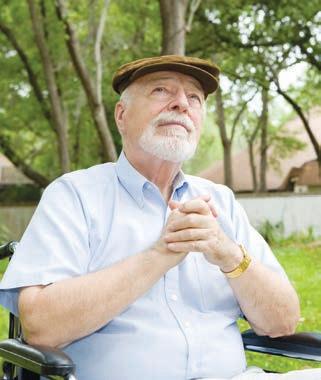
Showcase your educational and camp offerings to Jewish families looking for the perfect fit for their children during these difficult times. JEWISHAZ.COM

Fans of Israeli actor Gal Gadot had something big to look forward to this Christmas when Warner Bros. Entertainment released “Wonder Woman 1984,” the long-awaited sequel to director Patty Jenkins’ wildly successful “Wonder Woman,” for streaming on HBO Max.

The film picks up some 70 years after the end of “Wonder Woman,” with our undercover Amazon protagonist working a day job as archaeologist Diana Prince and thwarting criminals anonymously in her spare time. Despite her success, she is still mourning the death of her pilot boyfriend, Steve Trevor, after he sacrificed himself to protect humanity from a deadly weapon during their escapades in World War I.
While working at the Smithsonian in Washington, D.C., Diana meets new colleague Barbara Minerva, a social outsider played to awkward perfection by Kristen Wiig. When the museum is asked to identify a mysterious artifact, Barbara and Diana are drawn into a greedy businessman’s plot to grant everyone in the world their deepest desires.
The first half of the film is full of everything that made the first movie delightful and groundbreaking. The opening scenes on the Amazonian island of Themyscira, where Lilly Aspell’s young Diana is participating in an epic test of strength and skill, are perfect in every way. Jenkins’ use of slow-motion once again avoids the cliché that plagues action movies because it highlights the strength and agility of the Amazons without overly sexualizing them, which is rare for women’s bodies on screen. Gadot’s battle scenes throughout the film are also beautifully choreographed.
Jenkins is to be commended for her attention to






detail and her commitment to continuity between the two Wonder Woman films. She takes the fish-outof-water comedy that served as the source of the first movie’s charm and reapplies it to Steve’s miraculous — and kind of creepy — arrival in the ’80s. Diana’s confusion at restrictive Victorian women’s fashion in the London department store provided plenty of laughs, and Chris Pine imbues Steve with pure, hilarious joy at things like escalators, fanny packs and the latest in aviation technology.
Fans of the first film may notice the visual parallels Jenkins creates; in the original, Diana’s shiny armor is a literal bright spot in the muted grays and browns of Europe’s smog-smothered cities, besieged towns, muddy trenches and pallid soldiers. The striking color contrast represents her perseverance and hope, even when all seems lost.
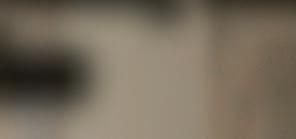
In 1984, which Jenkins interprets as an age of glorified greed, Diana’s timeless, minimalist outfits in white and navy are meant to be a tasteful alternative to the neon pink leg warmers and aqua workout suits that the masses have embraced. This time, her visual presence advocates for moderation in the face of excess.
The plot starts to get shaky as the film develops its two villains: Wiig’s Barbara, who later becomes the bloodthirsty Cheetah, and Pedro Pascal’s Max Lord, the con man desperate for success as his pyramid scheme collapses. Their insecurities drive them to embrace the power of an ancient, powerful stone that grants wishes while exacting a terrible price.
Wiig channels her comedic chops to make the motivations of insecure Barbara ring true to anyone who has ever been jealous of a more beautiful, popular friend who appears to have it all. Pascal’s Max is also
compelling, as his motivations stem from a deep emotional vulnerability that has to do with his young son, Lucian Perez’s Alistair.
The two villains together, however, are just chaotic, and their competing backstories and character arcs are the main reason the film runs a whopping 2 hours and 32 minutes.
Despite the length, many key plot points feel glossed-over.
Audiences get a hint of this problem when Diana enters her flat for the first time. Jenkins seems to have anticipated a burning question raised by the time gap between World War I and 1984: What was this superhero doing to stop the atrocities of World War II and the Holocaust? She answers with a long zoom-in of an old photograph of Diana alongside men in striped prison uniforms, suggesting she played some role in liberating concentration camps, but we never get more information than that.
This vagueness continues when Steve magically returns. The mechanism of his reanimation is given a short but far from satisfactory explanation, and the audience is expected to run with it despite the multiple troubling questions it raises. The origin of the wishing stone is equally vague, and the consequences of wishes gone amok happen so quickly it’s hard to process the world’s descent into chaos.
The movie is ultimately worth a watch for the breathtaking visuals and action sequences alone, but fans of the first film will feel some storytelling magic is missing. JN
Hillel at ASU celebrates its donors who raised over $20,000 for all that it does to help Jewish students on campus.
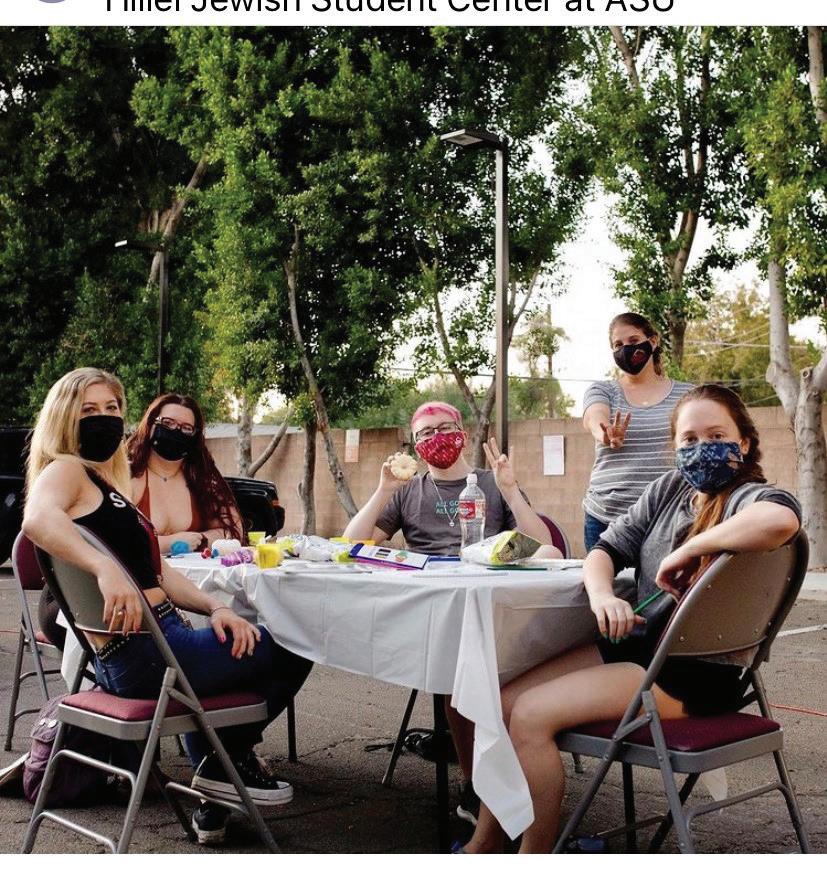
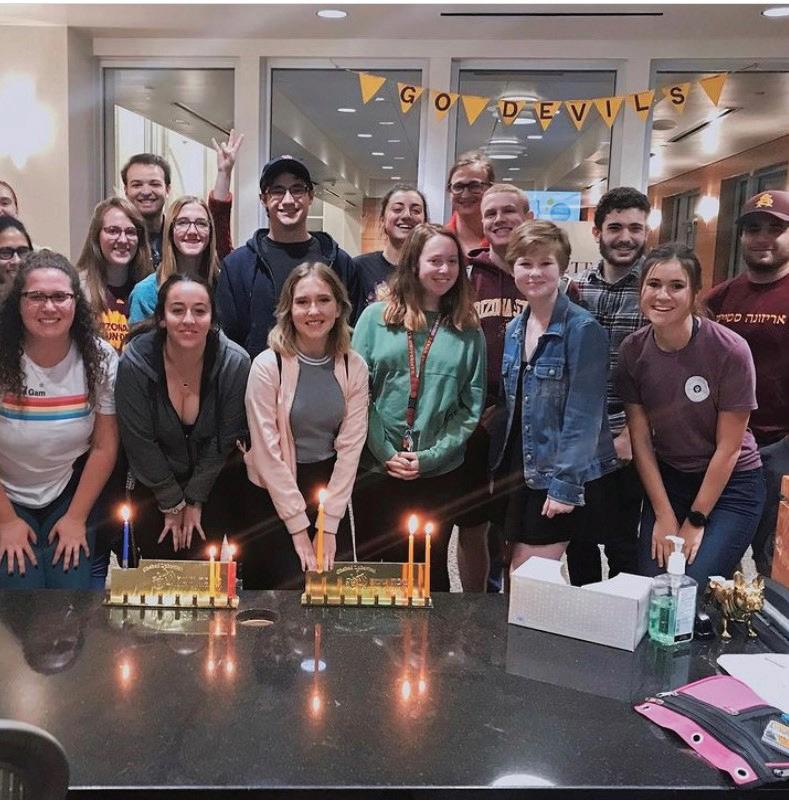
This COMMUNITY page features photos of community members around the Valley and the world. Submit photos and details each week to photos@jewishaz.com by 10 a.m. Monday.
Chabad of Arizona’s annual menorah parade took place Monday night fulfilling the obligation to publicize the Chanukah miracle. This year’s run added over three miles (heading east) and included about 85 cars.

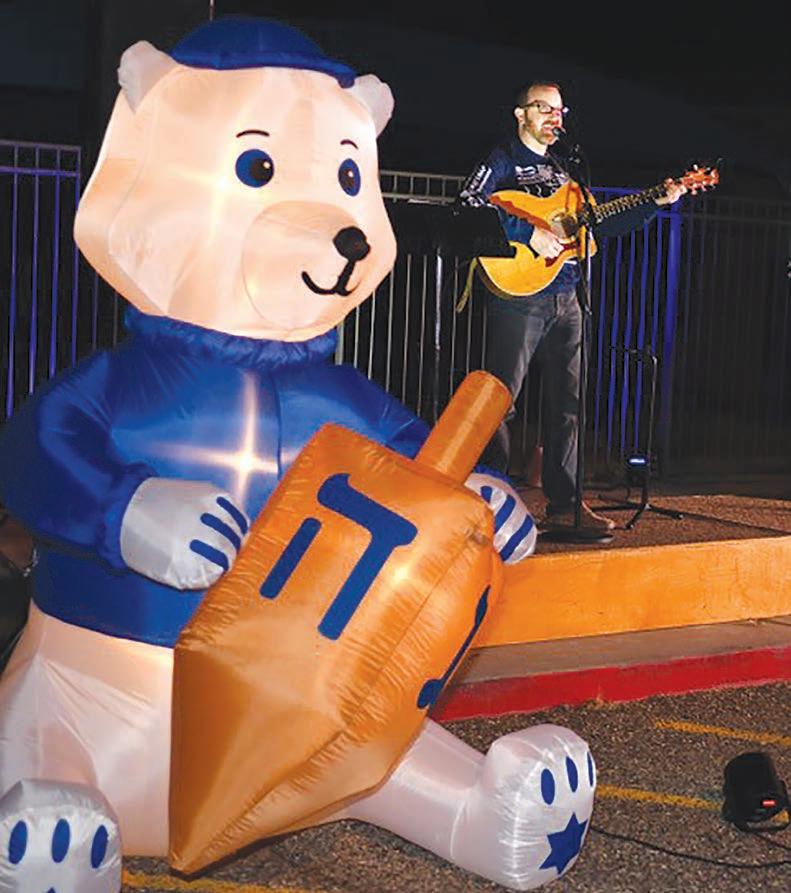
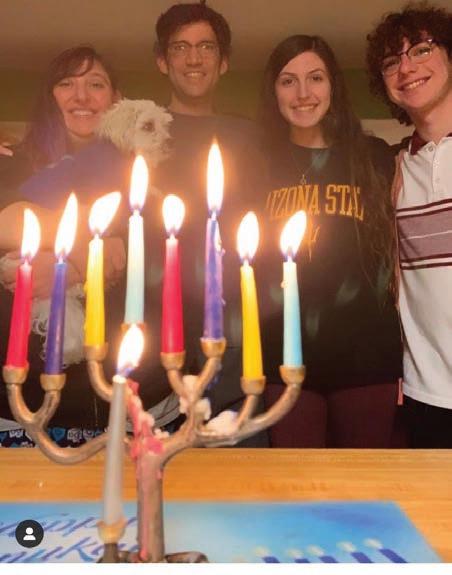
Chabad of Arizona’s annual menorah parade ended at the capitol where a menorah was lit.
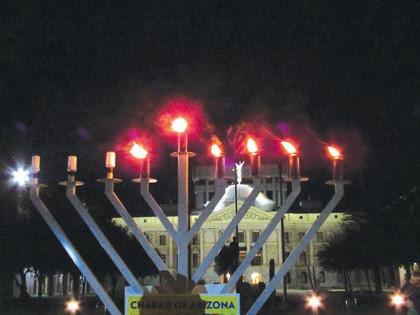
Enjoying sufganiyot
Phoenix police enjoy sufganiyot at Chanukah courtesy of Chabad of Arizona.
BY HERSHL WEBERMAN
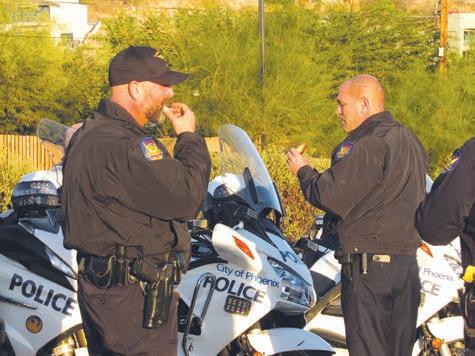
MONDAY, JAN. 11
Sherman Minkoff Lecture: The Creation Story and Humanity’s Homework:
4-5:30 p.m. A virtual event taught by Rabbi Dr. Sid Schwarz and hosted by Valley Beit Midrash. Many Jews do not take the biblical account of creation very seriously, yet the passages reveal profound truths about how we understand God, humanity and humanity’s responsibility to the planet. RSVP to receive Zoom link. Cost: $18. For more information or to register, visit valleybeitmidrash.org/ upcoming-events.
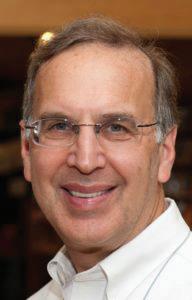
MONDAY, JAN. 25
Anti-Semitism in Comparative Perspective: Recent Trends and Research Frontiers: 7:50 a.m.-4 p.m. The Lowe Family Research Workshop, hosted by the Center for Jewish Studies at Arizona State University, brings together leading scholars from around the globe to discuss the frontiers in the study of anti-Semitism and to debate critical factors that influence where and when ethnoreligious groups, and Jews in particular, are likely to be targeted and viewed with prejudice. For more information, visit jewishstudies.asu.edu.
FRIDAY, JAN. 8
Finding Meaning After Terror: Bosnian: 10 a.m.noon. A virtual seminar hosted by the Arizona Jewish Historical Society with Bosnian genocide survivor Esad Boskailo. Part of the Surviving Humanity (Reframing America) Seminar Series featuring survivors of terrorism, acts against humanity and other forms of genocide. The series draws comparisons of survival to the Holocaust. Free. For more information or to register, contact Tony Fusco at afusco@azjhs.org.
SUNDAY, JAN. 10
A Rabbi Reads the Qur’an: 10 a.m. An introduction to the Qur’an with Rabbi David Klatzker, paying special attention to how it relates to Jews, Torah and Jewish tradition. Participants should purchase a copy of M.A.S. Abdel Haleem’s translation of The Qur’an, available in paperback or on Kindle and Nook. For more information, email Rabbi Klatzker at rabbiklatzker@congregationortzion.org or visit otaz.org/quran.
Israeli Sovereignty in the Biblical Heartland: Moral and Legal Implications: 3-4:30 p.m. The Friends of Israel, Sun Lakes Jewish Congregation present Jake Bennett, National State Legislative Director for the Israel American Coalition on Zoom. RSVP required to receive Zoom link. Free. To RSVP, email Israelsunlakes@gmail.com.
MONDAYS, JAN. 11-25
Still Traveling: Sensational Seville: Noon-1:15 p.m.
An event series hosted by the East Valley JCC in partnership with The Osher Marin JCC. Join guide James Sokol on a virtual tour of Seville. On Jan. 11, tour the Seville Cathedral and Giralda; on Jan. 18, visit Barrio Santa Cruz and Jewish Seville; and on Jan. 25, take a trip to modern Seville. $15 per session. For more information or to register, visit evjcc.org/event/still-traveling-sensational-seville.
TUESDAY, JAN. 12
Rabbi Zalman Schachter-Shalomi: Interreligious Pioneer: 1-2 p.m. A virtual event presented by Rabbi Or Rose. Co-hosted by Valley Beit Midrash and Ruach Hamidbar. RSVP for Zoom link. Cost:
$18. For more information or to register, visit valleybeitmidrash.org/upcoming-events.
TUESDAYS, JAN. 12-26
Advanced Beginner/Intermediate Mahjong
Online: 1-2:15 p.m. A series for those with a mahjong card and a basic understanding of the game who would like to learn more. In four virtual sessions, Donna Miller-Small will teach how to pass tiles and pick the right hand, as well as how to strategize and play a more defensive game. Cost: $60 for members of the Martin Pear JCC, $75 for nonmembers. For more information or to register, visit vosjcc.org.
TUESDAYS, JAN. 12-MAY 25
Introduction to Judaism: 7-9 p.m. Learn the basics of Judaism with Rabbi Stein Kokin. For more information or to register, visit bethelphoenix.com/ adult-education.
WEDNESDAYS, JAN. 13-FEB. 17
Christianity for All, Marketed by Paul, Who Brilliantly Planned Judaism’s Fall: 10-11:10 a.m. A Bureau of Jewish Education course taught by Marcie Lee. Experience through the Christian Bible’s narrative why the idea that Jews and Christians should simply respect each other has not gone smoothly and why there is so much recent promise for positive change. Please bring a Christian Bible. Cost: $102. For more information or to register, visit bjephoenix.org/courses/ available-courses.
The Crown: Battles of Israelite Kings and Queens: 11:20 a.m.-12:30 p.m. A Bureau of Jewish Education course taught by Marcie Lee. Meet the Biblical crowned subjects in the Books of Kings. Cost: $102. For more information or to register, visit bjephoenix.org/courses/available-courses.
At the Heart of Three-Part Jewish Art: 12:401:15 p.m. A Bureau of Jewish Education course taught by Marcie Lee. See examples of culturally diverse artists— Non-Jewish artists on Jewish subjects, Jewish artists on Jewish subjects, and Jewish artists on the secular world—who have the creation of Jewish art in common. Cost: $102. For more information or to register, visit bjephoenix. org/courses/available-courses.
The Soul of a Stranger: Reading God and Torah from a Transgender Perspective: 1-2 p.m. A virtual event presented by Dr. Joy Ladin, co-hosted by Valley Beit Midrash and Temple Chai. Reading some of the best-known Torah stories through the lens of transgender experience, Joy Ladin will explore fundamental questions about how religious texts, traditions, and the understanding of God can be enriched by transgender perspectives, and how the Torah and trans lives can illuminate one another. RSVP for Zoom link. Cost: $18. For more information or to register, visit valleybeitmidrash.org/upcoming-events.
THURSDAYS, JAN. 14-FEB. 4
The Ethical Life: 6:30 p.m. A Bureau of Jewish Education course taught by Rabbi A. Nitzan Stein Kokin. Grapple with today’s most pressing ethical dilemmas with a curriculum from the Jewish Theological Seminary. Cost: $72. For more information or to register, visit bjephoenix.org/ courses/available-courses.
THURSDAYS, JAN. 14-MARCH 25
Israel and the Middle East Through the Lens of Ever-Changing Events in the US, Israel and the Middle East: 12:30-2 p.m. A Bureau of Jewish Phoenix course taught by Meir Jolovitz. An examination of the implications of the election and current events. Cost: $130. For more information or to register, visit bjephoenix.org/ courses/available-courses.
FRIDAY, JAN. 15
Breaking the Silence: Reminiscences of a Hidden Child: 10 a.m.-noon. A virtual seminar with Holocaust survivor Paul Schwarzbart, hosted by the Arizona Jewish Historical Society. To RSVP, contact Tony Fusco at afusco@azjhs.org.
TUESDAYS, JAN. 19-FEB. 2
Writing Your Jewish Life: 11:15 a.m.-12:30 p.m. A Bureau of Jewish Education course by Linda Pressman. Explore some of the best methods to access your story and life journey. Learn to express yourself in words in a way that you will be proud to have others read. Cost: $48. For more information or to register, visit bjephoenix.org/ courses/available-courses.
TUESDAYS, JAN. 19-FEB. 9
What We Do and Why We Do It: 10-11 a.m. A Bureau of Jewish Education course taught by Rabbi Laibel Blotner. Discover the rite and reason behind the Jewish rituals. Cost: $60. For more information or to register, visit bjephoenix.org/ courses/available-courses.
WEDNESDAY, JAN. 20
Temple Solel Lunch and Learn with Mitzvah Maven Danny Siegel: Noon. Join Temple Solel for the book launch of “Radiance” and interview with author Danny Siegel. Rabbi Debbie Stiel will lead a discussion with Siegel concerning his writings and mitzvah work. The talk will include some teaching, some text about Jewish values and reading poetry with an opportunity for comments and questions from guests. To RSVP, email jnull@templesolel.org
JACS: Support Group for Jewish Alcoholics, Addicts and their Friends and Family: 7:30 p.m. For more information, email jacsarizona@gmail.com. No charge.
THURSDAY, JAN. 21
The Habitability of Our Nearest Exoplanet Neighbor and What Does It Mean to You: 1-2 p.m. A virtual presentation hosted by Professor Evgenya Shkolnik, co-hosted by Valley Beit Midrash and Congregation Beth Israel. Exoplanets are everywhere, and in fact, outnumber the stars in our galaxy. Of these, billions of them are potentially habitable, including our nearest neighbor, ‘Proxima b’, which lies only 4 lightyears away. We will learn about the discovery Proxima b and its potential to host life as we know it, and discuss its relevance to us here on Earth. RSVP for Zoom link. Cost: $18. For more information or to register, visit valleybeitmidrash.org/ upcoming-events.
MONDAYS, JAN. 25-MARCH 1
The Writings and Wisdom of Rabbi Lord Jonathan Sacks z’l: 12:15-1:30 p.m. A Bureau of Jewish Education course taught by Andre Ivory. Rabbi Sacks, who passed away recently, possessed a world of wisdom which crossed denominational lines. His books, writings and
philosophy not only impacted today’s world, but his intellect, scholarship and wisdom will be felt for generations to come. Cost: $98. For more information or to register, visit bjephoenix.org/ courses/available-courses.
MONDAY, JAN. 11
Carl Reiner “Dispatches in Quarantine”: 1:302:30 p.m. In his last interview prior to his passing this summer, Carl Reiner shares his wit and wisdom in his iconic way. Presented by the JFCS Center for Senior Enrichment in cooperation with Silver Screen Studios, followed by a Q & A with Silver Screen founder, Tiffany Woolf. Free. For more information, visit jfcsaz.org/cse.
TUESDAY, JAN. 12
Hip Historian Marshall Shore: 11 a.m.-noon. This week, historian Marshall Shore will be exploring 1952 with a concentration on Arizona. Free. For more information, visit jfcsaz.org/cse.
Ethnomusicology in Africa: 1:30-2:30 p.m. Katie Palmer from the Musical Instrument Museum (MIM) presents the fascinating study of music and world cultures known as ethnomusicology. This interactive session will focus on sounds from Africa. Free. For more information, visit jfcsaz.org/cse.
TUESDAYS, JAN. 12-FEB. 2
Wise Aging: 7-8:15 p.m. A Bureau of Jewish Education course taught by Linda Levin. Wise Aging is designed specifically to meet the social, emotional and spiritual needs of Jewish seekers entering second adulthood. Explore the tools and resources to age wisely through the lens of Jewish wisdom. Learn positive ways to navigate a meaningful transition to the next chapter on life’s journey. Cost: $68. For more information or to register, visit bjephoenix.org/courses/ available-courses.
THURSDAY, JAN. 14
Phoenix Art Museum looks at The Grand Canyon: 11 a.m.-noon. A Phoenix Art Museum docent offers a new look at the Grand Canyon and architect/ designer Mary Colter. Ms. Colter was one of the very few female American architects in her day and designed many landmark buildings and spaces for the Fred Harvey Company and the Santa Fe Railroad, notably in Grand Canyon National Park. Presented by JFCS Center for Senior Enrichment. Free. For more information, visit jfcsaz.org/cse.
FRIDAYS, JAN. 15-MARCH 5
Wise Aging: 11:30 a.m.-1 p.m. A Bureau of Jewish Education course taught by Nan Pollinger. Wise Aging is designed specifically to meet the social, emotional and spiritual needs of Jewish seekers entering second adulthood. Explore the tools and resources to age wisely through the lens of Jewish wisdom. Learn positive ways to navigate a meaningful transition to the next chapter on life’s journey. Cost: $130. For more information or to register, visit bjephoenix.org/courses/ available-courses.
TUESDAY, JAN. 19
Mamaloshen - Yiddish Club: 11:15 a.m.-12:15 p.m.
Share the warmth and humor of Yiddish with Rabbi Laibel Blotner. Presented by JFCS Center for Senior Enrichment. Free. For more information or to register, visit jfcsaz.org/cse.
TUESDAY, JAN. 26
American Photographer Edward S. Curtis: 11 a.m.-noon. Jane Przelica offers an interactive presentation on “The Shadow Catcher: American Photographer Edwards S. Curtis.” Presented by JFCS Center for Senior Enrichment. Free. For more information, visit jfcsaz.org/cse.
SATURDAY-SUNDAY, JAN. 9-10
The Fabulous Five in Concert: A free online concert hosted by the Arizona Jewish Historical Society featuring the Fabulous Five, which brings together the musical talents of the husband-andwife duo, Paolo Alderighi and Stephanie Trick, and We3 (Nicole Pesce, Renee Patrick and Suzanne Lansford). Free. For more information or to register, visit azjhs.org/musical-concerts.
FRIDAY-SUNDAY, JAN. 15-17
Documentary Film Screening: “Golda”: A screening of “Golda” hosted by the Arizona Jewish Historical Society. Guests can watch the film any time between Jan. 15-17. Free. For more information or to register, visit azjhs.org/golda.
SUNDAY, JAN. 24
Second Annual Klezmer Fest: Jewish/Black Music: 1 p.m. The second annual Klezmer Fest, hosted by the East Valley JCC, will feature four live virtual concerts by Yale Strom and Hot Pstromi. On Jan. 24, the group will perform melodies
composed and written by Jews and AfricanAmericans from the 1910s to the 1950s. Cost: $10 per concert. For more information or to register, visit evjcc.org/klezmer2020.
“Viral: Antisemitism in Four Mutations”: 2 p.m. Martin Pear JCC, 12701 N. Scottsdale Road, Scottsdale. Part of the Martin Pear JCC’s Movies with a Message documentary film series. Hosted in partnership with Congregation Beth Tefillah. Watch “Viral: Antisemitism in Four Mutations” and join filmmaker Andrew Goldberg for a Q&A. Virtual option available. Cost: $10-$20. For more information or to register, visit vosjcc.org/ movies2021.
SUNDAY, JAN. 31
Musicians of the Symphony at The J: 2-3 p.m. Martin Pear JCC, 12701 N. Scottsdale Road, Scottsdale. An afternoon of music with violinist Leslie Frey Anderegg, cellist Yeil Park and violist Mark Dix. Cost: $30 for MPJCC members, $45 for nonmembers. For more information or to register, visit vosjcc.org. JN
REBECCA ALLISON
Rebecca Allison becomes a bat mitzvah on Jan. 9, 2021, at Congregation Kehillah. She is the daughter of Scarlett and Allen Allison of Phoenix.
For her mitzvah project, Rebecca is making masks for nursing homes and gathering blankets, clothing and other necessary items for homeless shelters.
A student at Explorer Middle School, Rebecca enjoys guitar, violin, piano, singing, painting and taking care of animals.
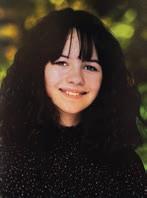
ABIGAIL FAYE COHEN
Abigail Faye Cohen becomes a bat mitzvah on Jan. 16, 2021, at Temple Chai. She is the daughter of Teri and Daniel Cohen of Phoenix. Grandparents are Jane Kaskel and of Tucson; and Brenda and Herbert Cohen of Rockville, Maryland.
For her mitzvah project, Abigail is working with family and friends to create a “mushroom” garden out of wooden spools for the playground at Temple Chai Early Childhood Center.
A student at Explorer Middle School, Abigail enjoys longboarding, watching Twitch and spending time with family and friends.
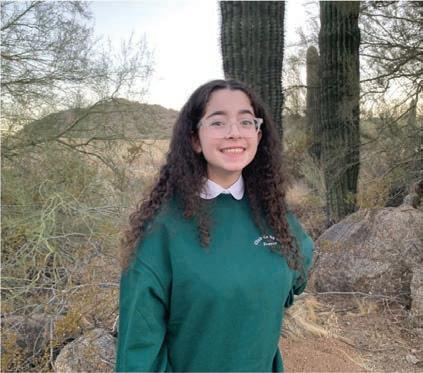
MAXWELL IAN COHEN
Maxwell Ian Cohen becomes a bar mitzvah on Jan. 16, 2021, at Temple Chai. He is the son of Teri and Daniel Cohen of Phoenix. Grandparents are Jane Kaskel and of Tucson; and Brenda and Herbert Cohen of Rockville, Maryland.
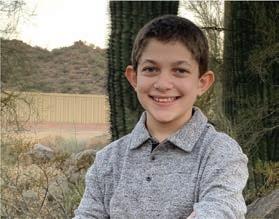
For his mitzvah project, Maxwell is working with family and friends to create a “mushroom” garden out of wooden spools for the playground at Temple Chai Early Childhood Center.
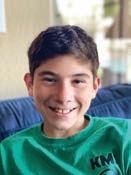
A student at Explorer Middle School, Maxwell enjoys flag football, basketball and spending time with family and friends.
BAR MITZVAH
BLAKE VAUGHN YOSOWITZ
Blake Vaughn Yosowitz becomes a bar mitzvah on Jan. 16, 2021, at Temple Emanuel of Tempe. He is the son of Amy and Rob Yosowitz of Tempe. Grandparents are Marsha and Kenny Dobin of Silver Spring, Maryland; and Nancy Levy and Gerald Yosowitz of Orange Village, Ohio; and the late Vivian Yosowitz.
For his mitzvah project, Blake worked with religious school friends to collect gently used and new sports equipment for the Boys & Girls Club and Sunshine Acres and held a fundraiser for the Boys & Girls Club.
A student at Kyrene Middle School, Blake enjoys video games, YouTube, basketball, baseball, cross country, football, sports statistics and time with friends. JN
Iconic cattleman, entrepreneur and philanthropist Harvey Dietrich passed away on Dec. 24, 2020, in Phoenix due to COVID-19. Harvey was born on Nov. 16, 1934, to Simon and Anne Dietrich in Boston, Massachusetts. The family lived in Boston until Harvey was 8 years old. Simon’s health problems drove the family west, first to Phoenix and then to Los Angeles.
Simon was involved in the meat business in Boston and that is where he found work in L.A. By the time he was 15, Harvey was in the meat business too as a self-professed city kid in his first summer job. His employer’s son picked him up at 3 a.m. for a 13-hour work day at a packing plant. After finishing high school, Harvey went to Pierce Agriculture College. During this time, Harvey worked for Globe Meat Packing owned by Victor Katz and the Krassen Brothers. Lou Krassen quickly saw Harvey’s potential, and started taking him on buying trips. Soon after that, Harvey got his first full-time job as a cattle buyer with Bernie Fineman, an independent Los Angeles meat packer.
In 1959, Harvey and his first wife, Sheila, moved to Phoenix to replace a noted Jewish cowboy who bought cattle in Arizona for the company he worked for. That was when Harvey began making enough money to start his own side businesses, including owning cattle and launching Sun Land Beef Co.
During his 15 years with Sun Land, Harvey put together the Ralph’s California Grown Beef Program, the first program of its kind. When customers complained about toughness of the beef, Sun Land hired scientists to study cows and feed. That led to a change in the cattle being used and Holsteins came on the scene as a beef breed, which changed the whole beef industry.
Over the years, Harvey created Cholla Livestock, and ran his cattle operation on his acquired Diamond A Ranch, largest ranch in Arizona, stretching more than 750,000 acres from Seligman to the north edge of the Grand Canyon. Harvey was dubbed with several monikers during his lifetime ranging from “Hard-Hearted Harvey” when he was a cattle buyer to “Arizona’s Last Jewish Cowboy” in a 2012 article. But the best was just plain “Harvey.” Everyone in the cattle business knew exactly who you were talking about. There were also those Harveyisms. Perhaps the best one was, “Always have a Plan A, B, C, and D. D is, don’t run out of money.”
Over the years, Harvey was honored in many ways, including being inducted in to the Arizona National Livestock Show’s Pioneer Hall of Fame. In 2015 he received the coveted Chester A. Reynolds Award from the National Cowboy & Western Heritage Museum. Some of the criteria for the award included honesty, humility, integrity and an unwavering commitment to Western ideals and values.
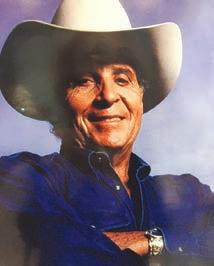
Making the award even more special was the presentation by longtime friend Gerald Timmerman. Gerald noted that Harvey was the kind of man who did business on his word. A rare breed in today’s world.
Harvey was never afraid to take on any challenge and believed in always doing what was right. He led the charge to educate the beef industry and the consuming public about the dangers of ractopamine, a controversial livestock feed additive that is banned in many nations around the world. As Harvey was quoted, “I am in the meat business, not the chemical business.”
In 2019 Harvey was appointed to the Arizona Beef Council by Gov. Doug Ducey.
One thing kept under his cowboy hat, a little known side to Harvey and his wife Marnie: They were tremendous philanthropists. One of their most cherished honors was from the Arizona Jewish Historical Society. In receiving that award, Harvey made a statement that defined him and his life’s work. The couple also were strong supporters of the Jewish National Fund, the Jewish community and many hospitals.
“The most important thing for me, and the way I look at things, is what you leave in people’s hearts and the quality of life, if you have that opportunity to change people’s lives, is extremely important,” Harvey said.
Harvey is survived by his wife Marnie in Phoenix; and his son and daughter from his first marriage, Steven and Lisa. A memorial service for Harvey will be held at a time in the future when it is safe for people to gather.
Donations in Harvey’s memory may be made at Jewish National Fund, JNF. ORG and the Arizona Jewish Historical Society azjhs.org/azjhs.
Karl Hermann, age 59, beloved and devoted best friend and husband of 27 years to Sharlene Hermann (Lubline). Loving father of Brandon and Carli Hermann. Dearest son of the late Don and Ruth Hermann. Loving son in law to the late Edward and Frieda Lubline. Dear brother of Sheldon Hermann (Cheryl), Larry Hermann (Laurie) and sister-in law Helen Hermann. Cherished uncle of Joey Hermann (Amber), Evan Lubline, (Caitlin), Marc Lubline (Kailey), Mitchell Lubline and Barry Lubline (Olga). Dear brother-in-law of Stuart Lubline (Jodi) and the late Michael Lubline (Randi) and the late Jerry Gold.
Karl was born in Cleveland, Ohio. Raised in Garrettsville, Ohio. He graduated from Garfield High School in Garrettsville in 1979. He worked for the family business, Hermann’s Pickle Company. He moved out to Phoenix in 1988. Karl was an incredible husband, father, son, brother, uncle, cousin, nephew and friend to many. He was an amazing man who will be remembered by all who had the honor of knowing him. Let’s remember all the beautiful memories shared with Karl. He will be missed dearly.

Karl passed away at his home in Chandler, AZ on Monday, Dec. 21, 2020. Funeral services were held in Chandler, AZ at The Valley of the Sun Mortuary and Cemetery on Wednesday, Dec. 23, 2020.
If you would like to make a donation in honor of Karl to Hospice of the Valley, we would greatly appreciate it. Hospice was a huge help caring for Karl the last two weeks of his life. They were absolutely amazing and I can’t even begin to say how grateful we are for all the nurses, CNAs and social workers who cared for him.
If you like to make a donation, please visit hov.org and scroll down to “Make a Charitable donation” and you may make it in Karl’s honor.
Thank you all so much.
Sol Moretsky died on Tuesday, Dec. 29, 2020, in Phoenix at the age of 85. A businessman, philanthropist and leader of the Jewish community, Sol was born on Nov. 11, 1935, in Detroit, Michigan, to Ben Moretsky of Kansas City, Missouri, and Elizabeth Saulles of Bucharest, Romania. Always a hard worker with an entrepreneurial spirit, Sol started numerous businesses in Detroit including the Michigan franchise of Mr. Softee Ice Cream before settling into a career in real estate and construction. He formed Haverhill Realty and Pontiac Construction Company, building fast food chain stores in the 1960s. In the 1970s Sol focused on building luxury custom homes and eventually shopping center ownership and management of the Redford Oaks Shopping Center (formerly “7 Grand”). After moving to Phoenix in 1981, Sol continued to operate Redford Oaks while establishing himself in the realty and construction business in the Valley of the Sun.

Over the past four decades, Sol was a passionate volunteer leader in the Jewish community. He held numerous leadership positions on several boards including serving as president of the board of directors of Kivel Campus of Care, a board member of the Jewish Federation of Greater Phoenix and president of Congregation Beth Israel. Sol was also appointed by Gov. Jane Hull to the state’s Council on Aging. As president of the board of directors of Congregation Beth Israel from 2005 to 2007, Sol oversaw the efforts toward Congregation Beth Israel’s purchasing the 52-acre Camp Daisy & Harry Stein property in Prescott from the federal government. Through Sol’s love, commitment and determination, hundreds of Camp Stein campers received scholarships as result of Sol’s tireless efforts throughout the years. Sol and his wife Rita were honored at the CBI Gala in 2015 and he was named a lifetime member of the CBI board of directors.
Sol is survived by his wife Rita Moretsky, daughter Lesa (Tim) Moretsky-Jordan, son Scott Moretsky, stepdaughter Jamie (Robert) Eisenfeld Jennings and stepson Dr. Steven Eisenfeld, and brothers Dr. Robert (Barbara) Moretsky and Dr. Sanford (Barbara) Moretsky. He was the grandfather of Elayna Jordan, Jacob Jordan, Michael (Sarah) Moretsky, Brynn Sheckell and Quinn Eisenfeld.
Funeral services have been held.
Donations may be made in Sol’s memory to Congregation Beth Israel to benefit Camp Daisy & Harry Stein. Arrangements by Sinai Mortuary.
Zera C. Lipetz, 99 1/2, passed away peacefully on Dec. 18, 2020. She was a “Woman of Valor,” beloved mother, grandmother, great-grandmother, sister, aunt and great-aunt, and devoted daughter and wife.
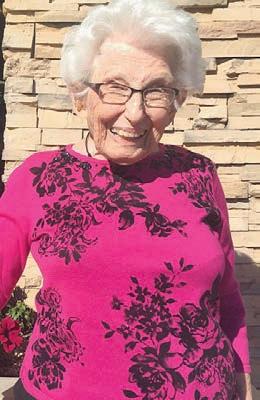
Born in New Orleans, Louisiana, on June 3, 1921, Zera was a gracious, warm, kind soul who was admired and treasured by all who knew her. For a tiny woman, she had a big presence. In Zera’s long life, she relished the highs and met the lows with grace, resilience and a tendency to deny what she did not wish to acknowledge. A loving niece called her “a firecracker” and that she was! She knew what she wanted and let you know it.
Zera had three children with her first husband, Samuel Jacob Goldberg, who died in 1968. She married her second love, Irving Lipetz, in 1974, and joined him in Louisville, Kentucky. Upon his death, in December of 2012, Zera moved to Scottsdale to be near family. For a time, the family enjoyed having four generations in the same community.
Donations in Zera’s memory may be made to Hospice of the Valley, 1510 E. Flower St., Phoenix, AZ 85014 or The New Shul, 7825 E. Paradise Lane, Scottsdale, AZ 85260 or to a charity of your choice. Graveside services were held in Louisville, Kentucky. For a complete obituary, go to meyerfuneral.com.
Stanford J. Stoneman, 88, beloved father, grandfather, greatgrandfather, brother, son, friend and more, passed away peacefully on Dec. 29, 2020, surrounded by his loving family.
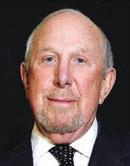
Stan was born in 1932, in Cleveland, Ohio, to Harry and Millie Stoneman. After relocating to Phoenix from Cleveland, Stanford soon met his wife, Edie, whom he married in 1955. They spent 65 loving, interesting and adventurous years together. He was an adoring father to Wendie, Cindi and Mark (Lisa); grandfather to David (Shira), Taylor, Nathan, Logan and Merin (Alex); great-grandfather to three, with one more due in January 2021; brother; uncle; and cousin. He was also a great friend to so many.
Stan’s life was filled with fun and travel throughout the years, both with groups of friends and his multigenerational family. He had special memories of rafting in the Grand Canyon, fishing in Oregon, partying in Catalina, traveling through the Amazon and Aruba, driving his motor home to Cabo, cruising and having adventures in Alaska, touring China, embracing Israel, and so many more.
When not on land, Stan loved being in Coronado on his boat. My Buddy IV Ever was his fourth boat, and his very favorite one. He loved having friends and family aboard, enjoying cocktails and listening to music. Taking his boat out on the ocean was his greatest delight. Stan was a great athlete and sports fan, and especially loved watching basketball. He was a big fan of the Phoenix Suns, and had season tickets for years. He also enjoyed bowling, fishing, skiing and racquetball.
Stan graduated from Arizona State University (when it was Tempe Teacher’s College) with a degree in accounting. He was a very hard worker, and became a successful accountant with his own practice. At age 50, he told his wife he wanted to retire. Her comment was, “You’re too young to retire.” So he went back to work. When he turned 70, he told her again he wanted to retire, and this time she let him. But Stan still kept up with business, and continued to be a consultant to his son.
He loved life and most of all, his family. He loved people and people loved him. He was a great judge of character and a trusted friend. He wanted most of all to be surrounded by family — and he was. We will hold dear forever the great memories and fond recollections that he left for all those lucky enough to know him. We will drink a toast to our beloved husband, father, grandfather, great-grandfather and friend. We will miss you so very much, but you built a tower of love and will never be forgotten.
On Jan. 27, 2020, Sherman, my devoted and caring husband of 45 years, left us a little earlier than expected, perhaps to look for a room with a view in Mission Beach, California. He was 78.
Sherman was a native Arizonan, the firstborn son of Howard Bendalin, a Lithuanian immigrant, and Bessie (Bromberg) Bendalin, a role that he carried proudly through all that he did in his life. He was a graduate of North Phoenix High School, Class of 1959, and of Dartmouth College (Hanover, New Hampshire), Class of 1963. While at Dartmouth, he participated in the ROTC program and completed four years on the rowing team. Sherman served as a lieutenant in the United States Army Corps of Engineers, primarily in Korea, from 1964 to 1966. Following a brief stint as a banker in Manhattan, he continued his education at The University of Arizona College of Law. His Class of 1969 came to be known as the “Carpenter Class”; Sherman was very proud of their creation of the Carpenter’s Scholarship Fund for deserving secondyear law students.
Sherman practiced law for many decades, with a focus on representing claimants before the Social Security Administration, and served on numerous boards and committees. Highlights from his professional life include: board of directors and president of the Phoenix South Community Mental Health Center, co-chair of the State Bar of Arizona Section on Mental Health and Elder Law, longtime member of the National Organization of Social Security Claimants Representatives (NOSSCR), president of Temple Beth Israel from 1987 to 1989, and board of trustees of the Union of American Hebrew Congregations (UAHC) from 1996 to 1999. During our high school years, Sherman and I met through BBYO. Thank heavens our paths crossed again in December of 1974, and that rekindled my high school crush. He was a BMOC then, and to this day, he still remains my BMOC. Sherman embraced me, my daughter Karrie, and my dog, Pasta Fazool. He quickly adopted Karrie as his very own child. As a family, we enjoyed both our home in the Willo
neighborhood of Phoenix, and our annual summer exodus to Mission Beach. Together with our Phoenix, high school and college friends, and locals Mark, Ben and Lynne, we hosted an annual beach party at Lifeguard Station 21. Sherman’s annual wish was to be the first one to see the elusive green flash at sunset. Although Sherman was often spotted in a crisp oxford shirt and khakis, he was really a tie-dye-T-shirt-and-jeans sort of guy who would gladly give you that shirt off his back. Throughout my years with him, I heard countless stories from others about how Sherman helped them, never wanting acknowledgement for having done so. Other “Shermabilia”: “Proud Mary” was his favorite dancing song; he loved giraffes, and collected hundreds of them; he loved Oreo cookies; he cherished his pets, which included many dogs and cats; he practiced sustainability before it was a common term; his favorite color was Dartmouth green; he read two-three books per week; some of his favorite movies were “My Fair Lady,” “The Bridge on the River Kwai,” “Chicago” and “Apocalypse Now”; his favorite local haunts were Fifth Avenue Café, Phoenix City Grill and Comedor Guadalajara; his favorite beer was the first one he drank each year after breaking the fast at the end of Yom Kippur.
One of Sherman’s favorite observations of me, his loving wife, was, “I’m always on time … no matter how long it takes.”
So as not to disappoint him, I allowed some space between his passing and the printing of this obituary.
Sherman was preceded in death by his parents, Howard Bendalin and Bessie (Bromberg) Bendalin, and his daughter Karrie Bendalin. He is survived by me, Evey, brother Marshall Bendalin of Houston, Texas (wife Barbara and children Ken (Susan), Liz Shoss (Robb) and Kathy Gorman), sister Bernice Green of Rancho Palos Verdes, California (husband Michael and children Suzanne Giles and Michelle Green) and sister Harriet Escalada of Nogales, Arizona (husband Joe and children Anna York (Greg), Joe Jr. (Dani) and Helen), 13 grandnieces and grandnephews and numerous cousins, most residing in El Paso, Texas. Because of the pandemic, plans are being made for a private unveiling service (placing the tombstone on the grave) in March 2021. In Sherman’s memory, please consider a donation to Hospice of the Valley (HOV.org), Arizona Humane Society (AZHumane.org) or Congregation Beth Israel (CBIAZ.org).
There are not enough words to express my gratitude toward my neighbors, friends and family who came forth with an outpouring of help, gifts and gentle words. I would also be remiss if I didn’t mention the teams of caregivers and staff from both Hospice of the Valley (Barb Hansen, Erin Butler, La’Quesha (“Q”) Klines and Dr. John Williams), Ryan House (Brianna and Sandra) and Home Instead (Cathy Rommes, Kailey Bright and Collins Atitu) who provided strength, love and support throughout Sherman’s decline.
And now that I have your attention … there are four angels, Andy Broder (nephew), Andi Opheim, Heidi Bran and Dana Bjornsen, who have protected me, hugged me and guided me through Sherman’s passing and throughout the pandemic, 24 hours a day. I am eternally grateful for their love and care.
Everyone who remembers Sherman is asked to celebrate his life in their own way. Raising a glass filled with your favorite wine or a cold beer would be quite appropriate. To be continued …
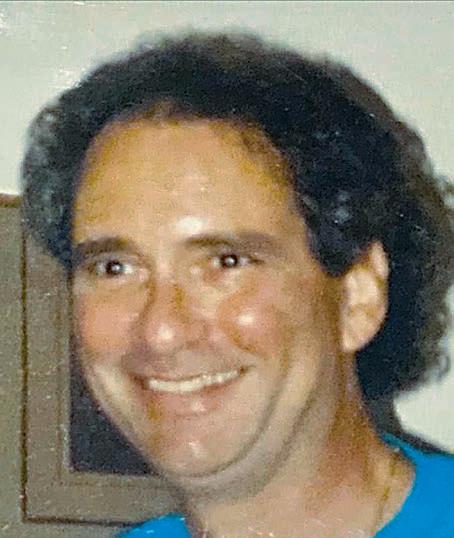

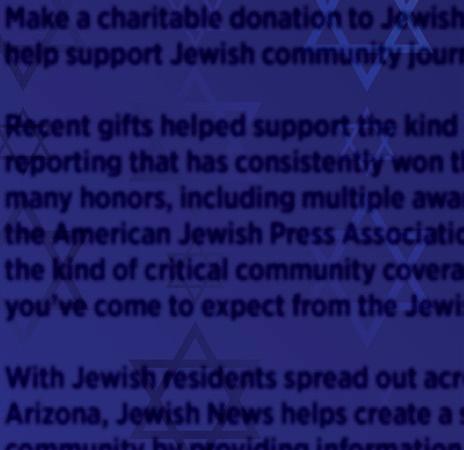
Make a charitable donation to Jewish News and help support Jewish community journalism.


Recent gifts helped support the kind of reporting that has consistently won the paper many honors, including multiple awards from the American Jewish Press Association, and the kind of critical community coverage that you’ve come to expect from the Jewish News.
With Jewish residents spread out across Arizona, Jewish News helps create a sense of community by providing information readers can use to connect more deeply with our heritage. Your generous gift helps to support local news coverage.

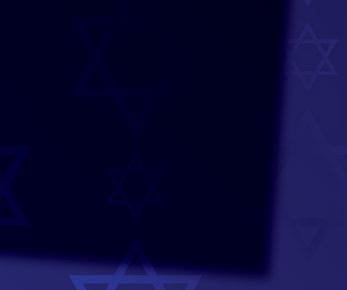

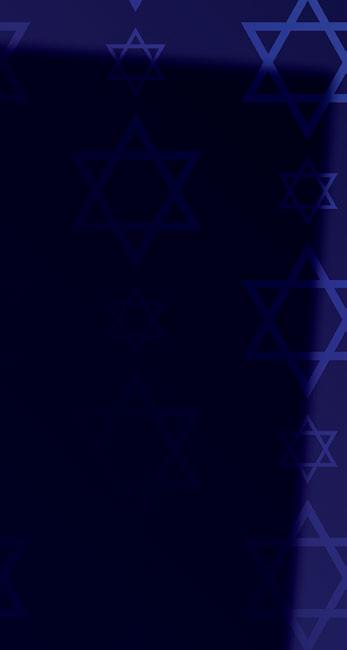
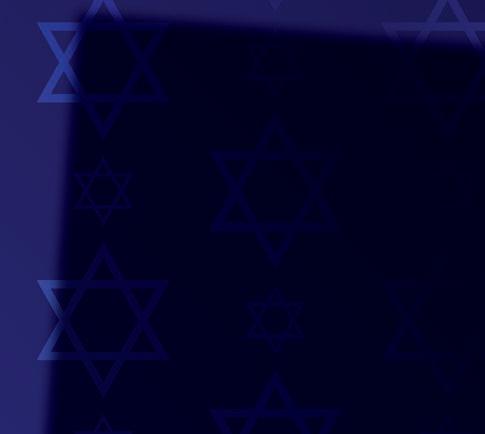
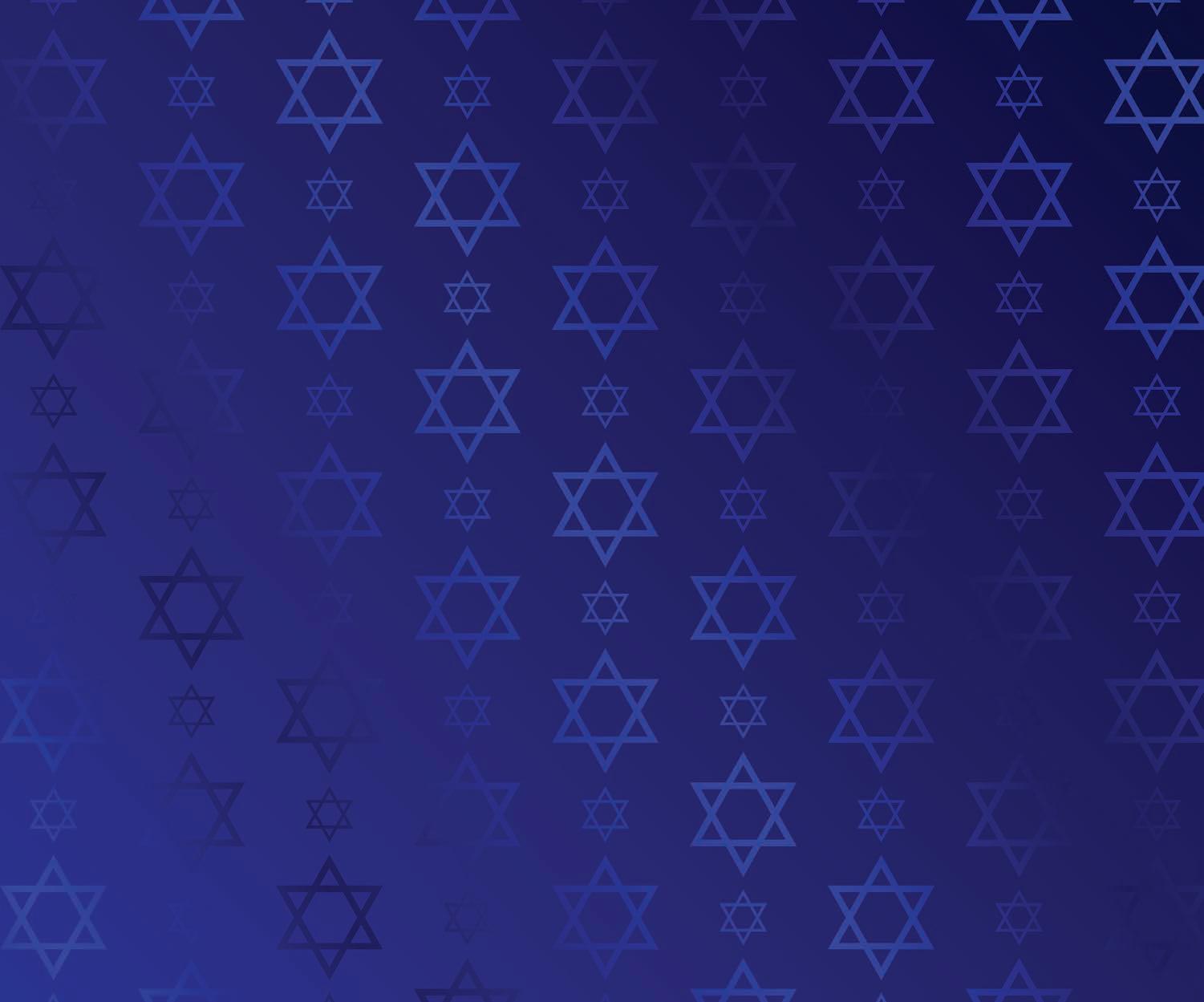
We are a 501(c)(3) organization, so your contributions are tax-deductible. Whether you read us in print or online, please help us continue our commitment to bringing you the local Jewish news that you have come to count on.
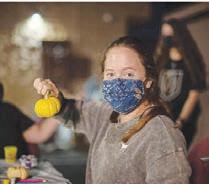

after the divisiveness of this election cycle. For those involved in the election process, whether it was informing voters, advising poll observers or canvassing for a candidate, it was a long campaign season. Ahead of Election Day, voters were bombarded with outreach efforts and reminders to vote, all of which helped produce record voter turnout: In Maricopa County, over 2 million ballots were cast, representing just over 80% of eligible voters. Temple Chai’s civic engagement initiative was one of many outreach campaigns. Since July, volunteers were busy participating in phone banks that focused both on the Temple Chai community itself and on reaching marginalized communities where people were less likely to vote. For Kaylie Medansky, director of teen, community and social action programs
Camp
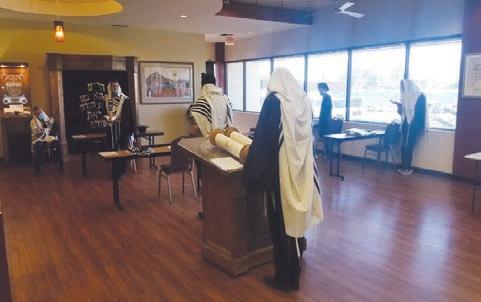
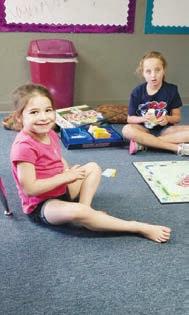



With COVID-19 cases rising in Maricopa County and reports of new positive cases in the Jewish community of Greater Phoenix, synagogues are tightening restrictions and even closing their doors to limit the spread of the disease. Two synagogues, Congregation Beth Israel and Congregation Or Tzion, closed in recent weeks, citing the increasing number of COVID-19 infections. Since mid- October, the number of confirmed cases per day in Maricopa County has risen steadily, surpassing 2,800 cases on Nov. 9. Both synagogues reopened in September for the High Holidays. CBI’s first in-person service was held on Rosh Hashanah with 60 members in attendance; after the High Holidays, attendance fell to around 30 people, and Friday evening services moved outside. Speaking to the Jewish News last month about CBI’s decision to reopen, Rabbi Stephen Kahn said that CBI
Please subscribe and continue to support JEWISH NEWS with a tax-deductible contribution. Complete the form below or go to jewishaz.com/subplus
